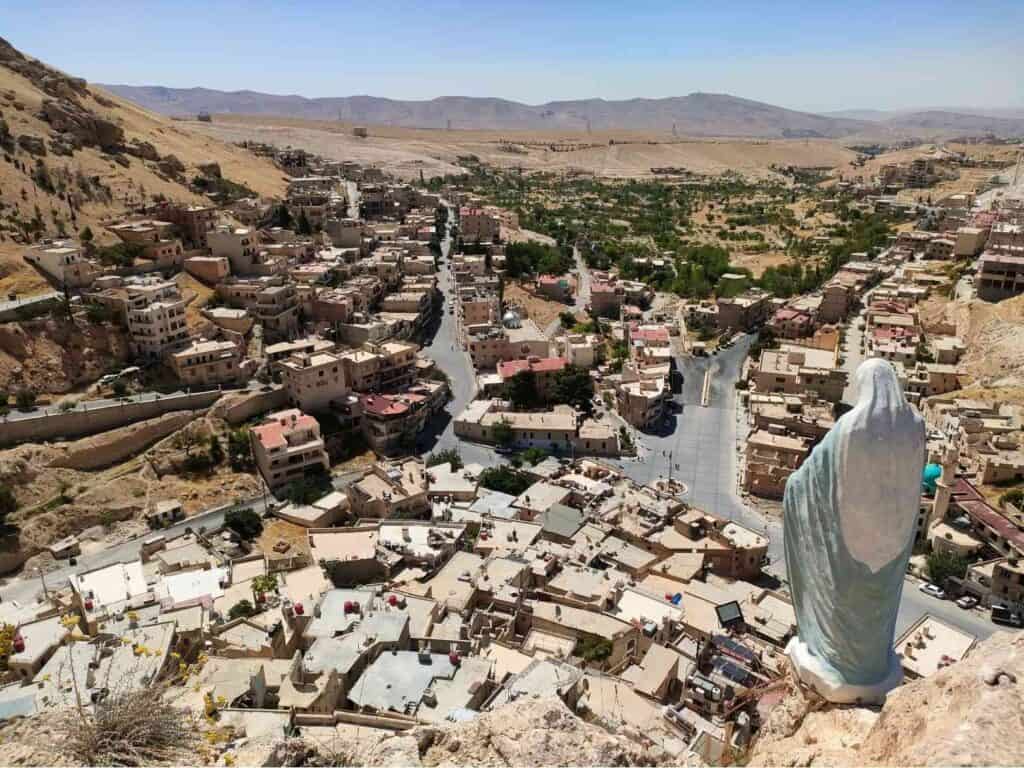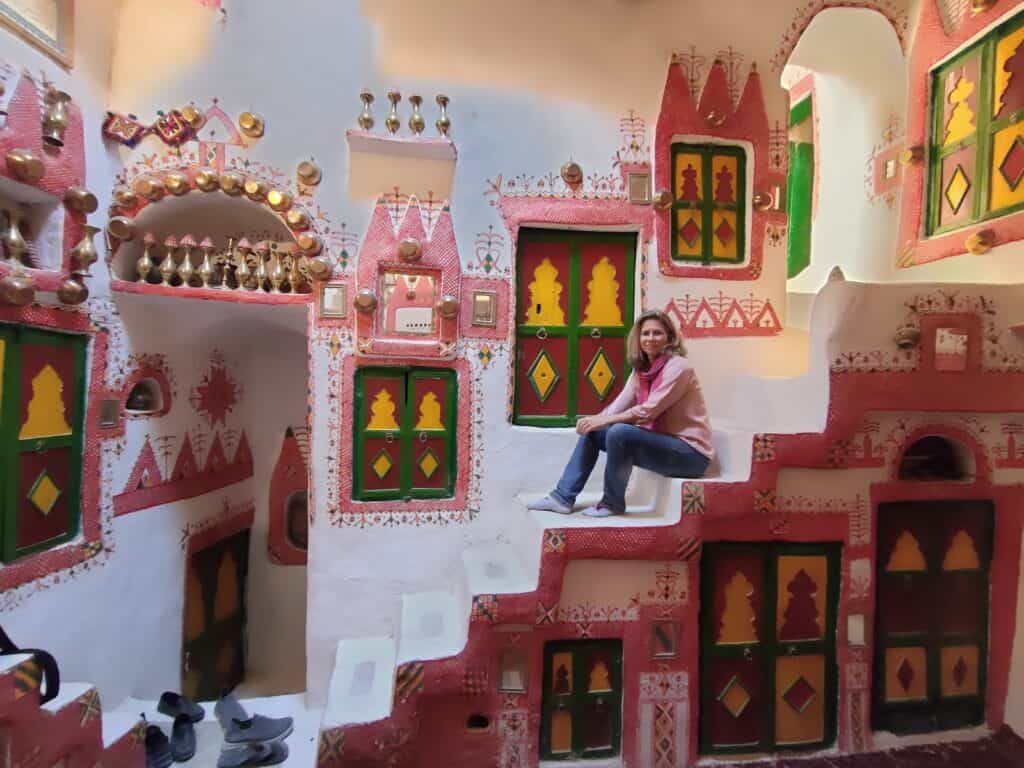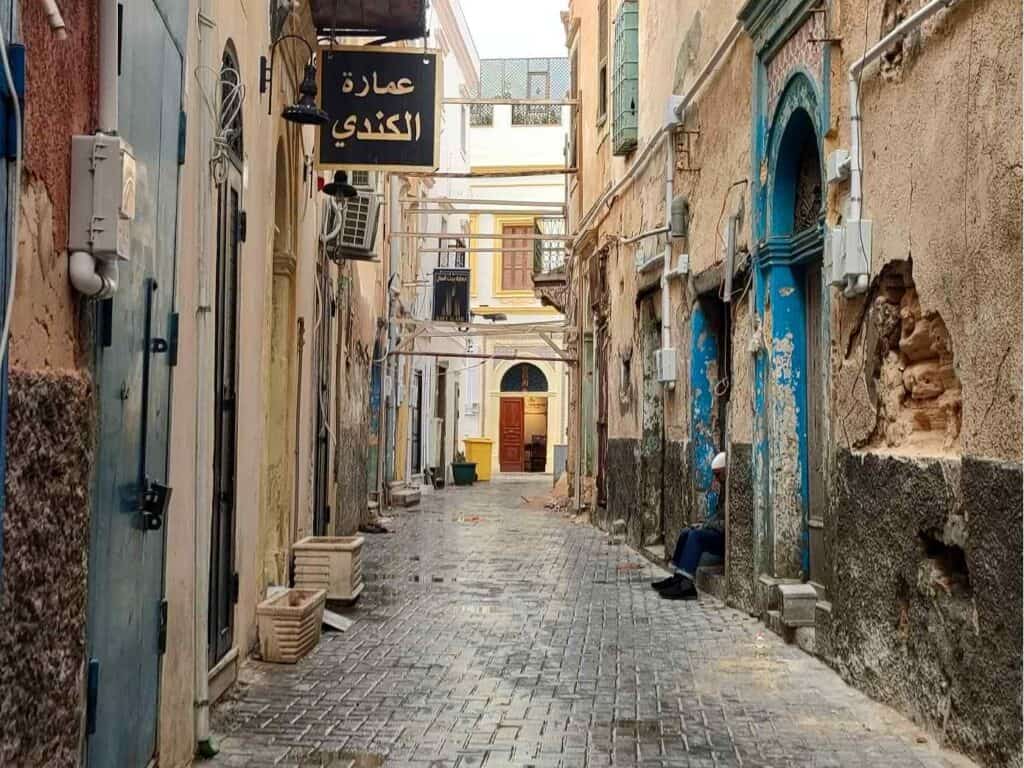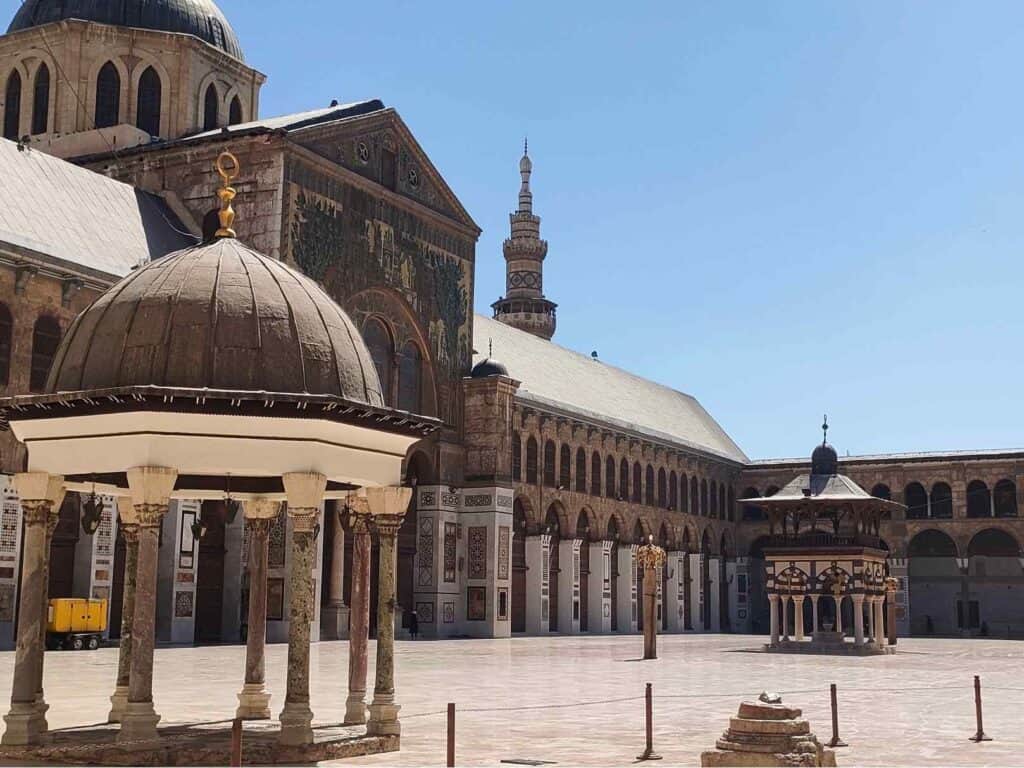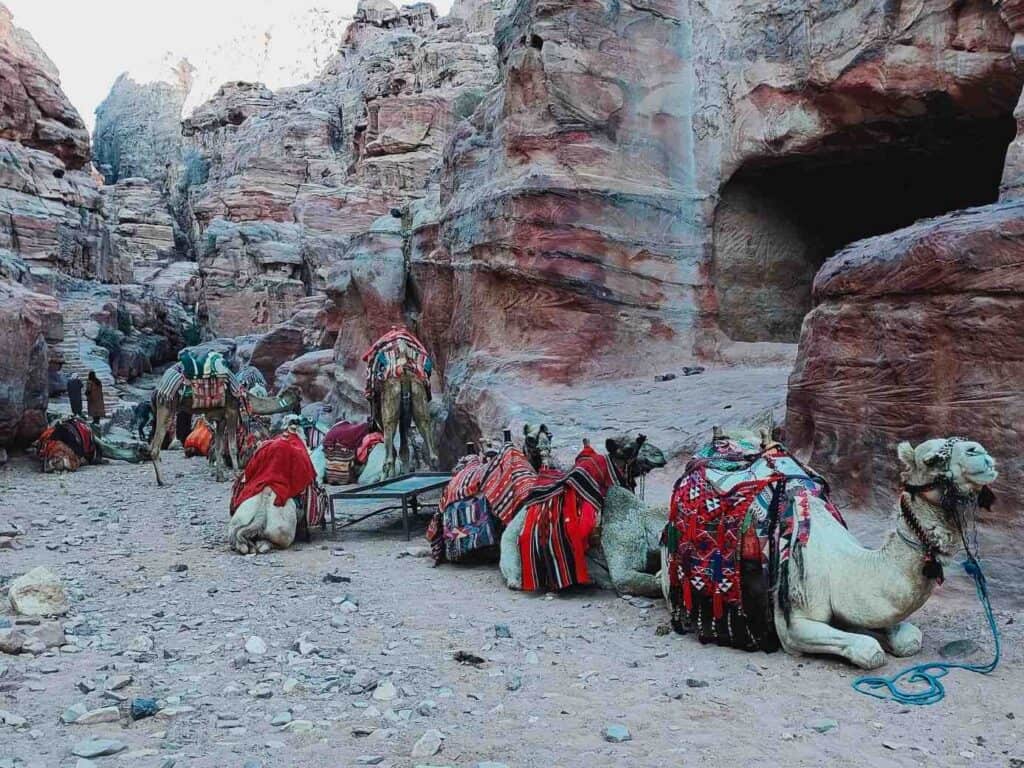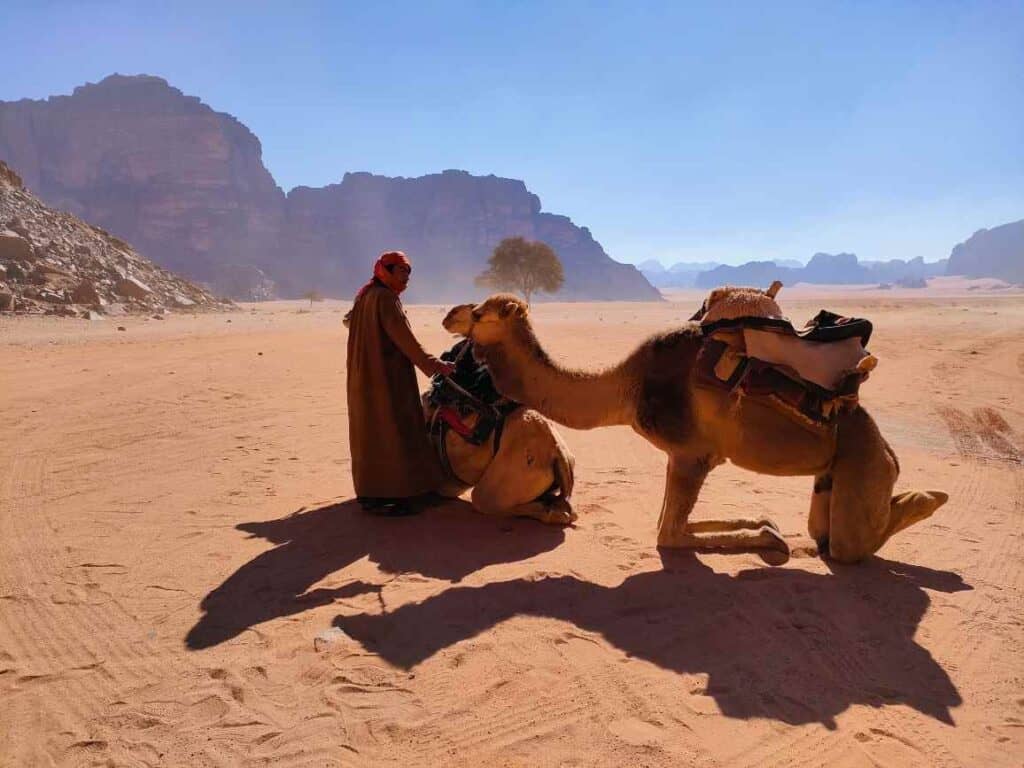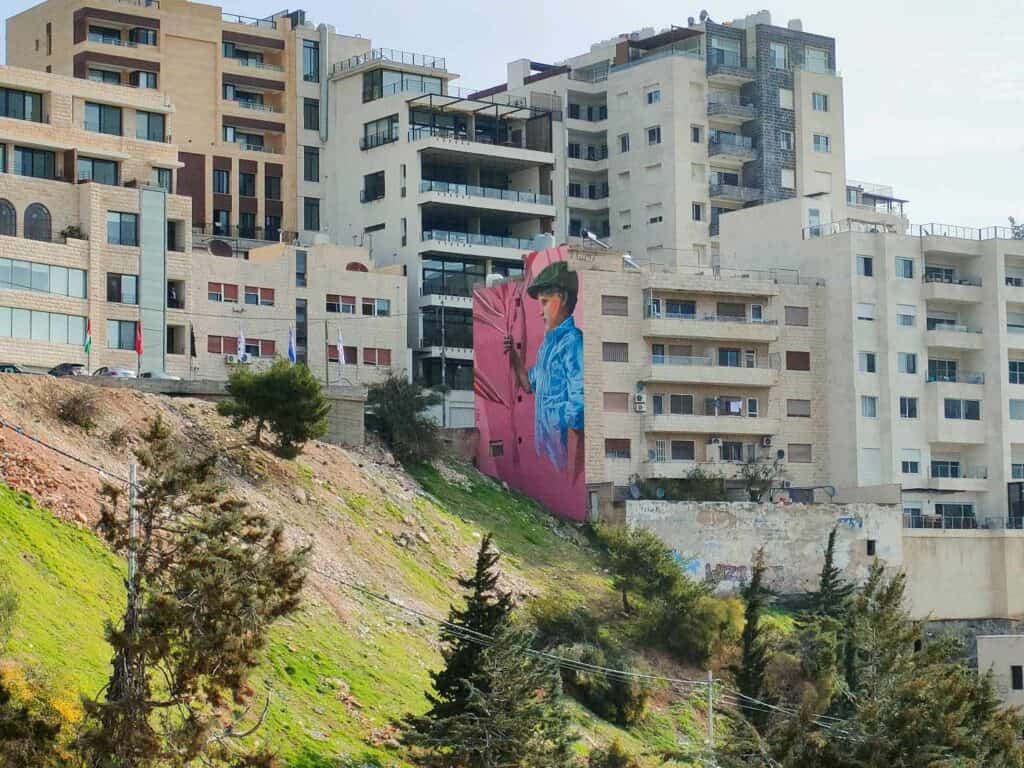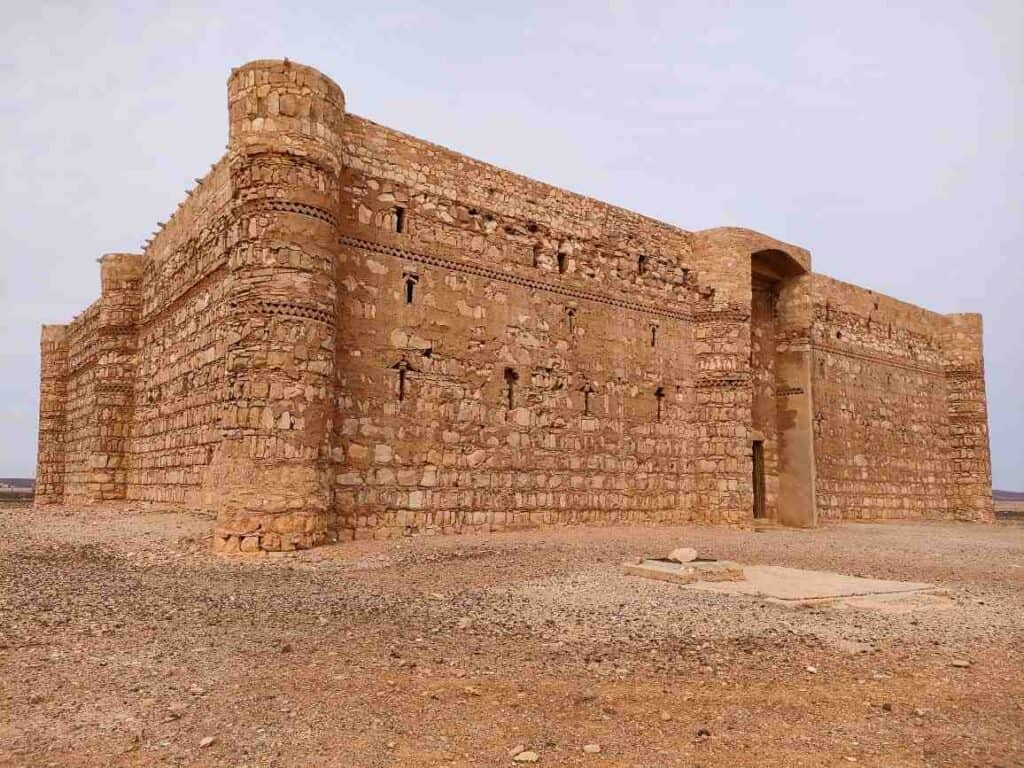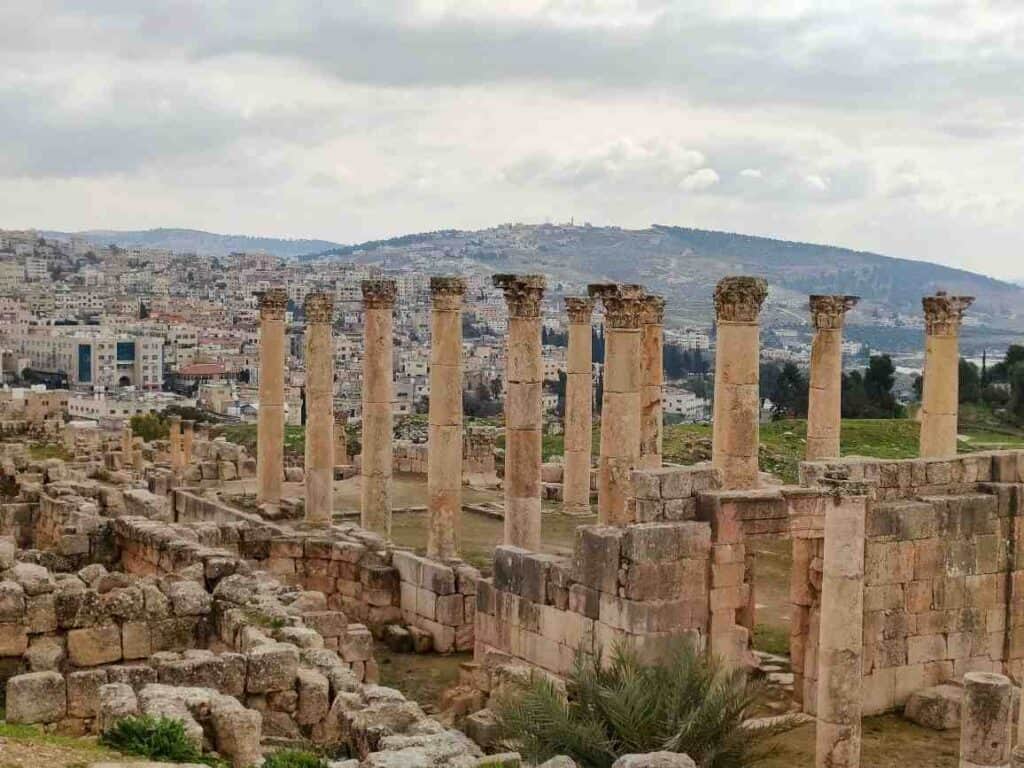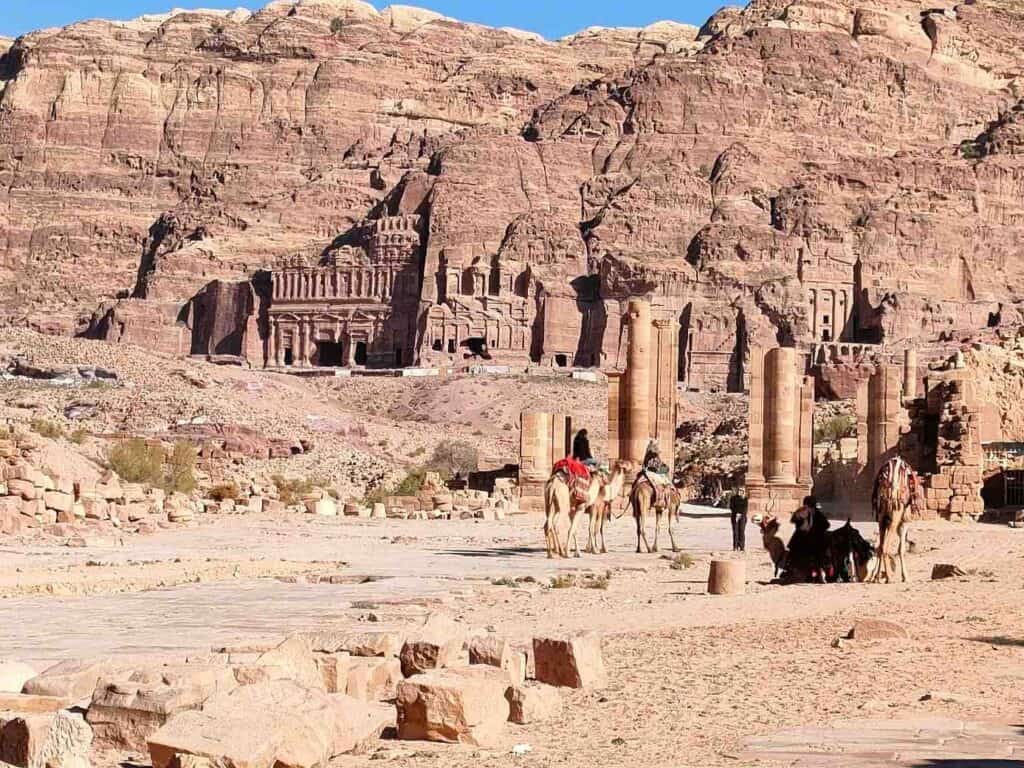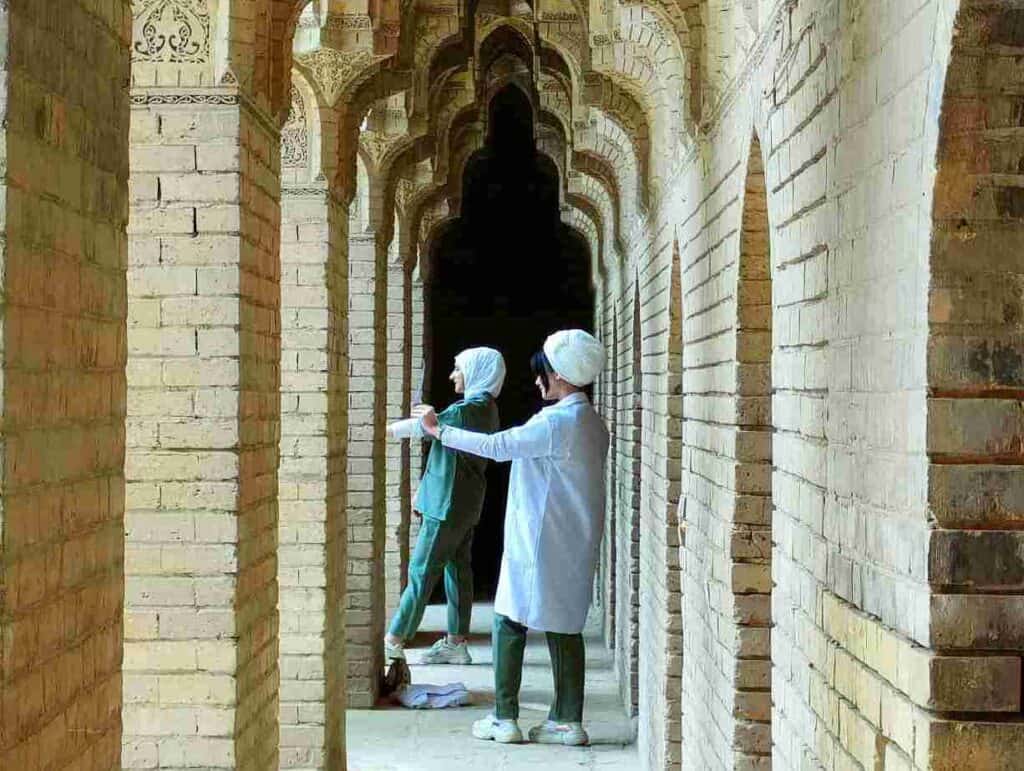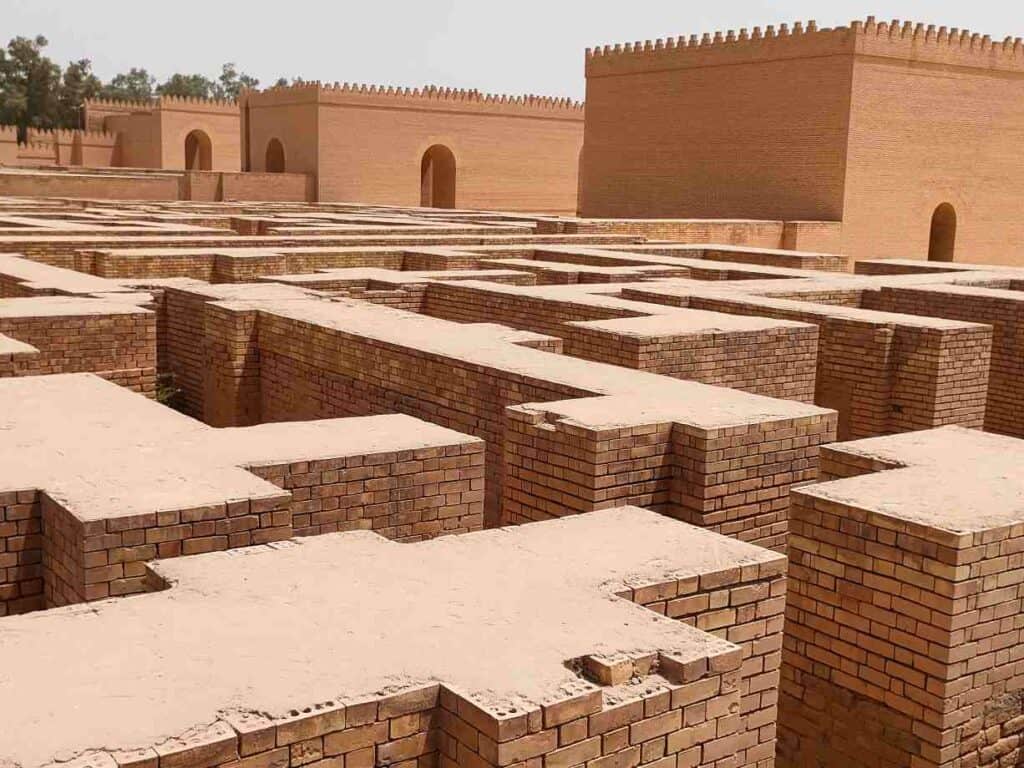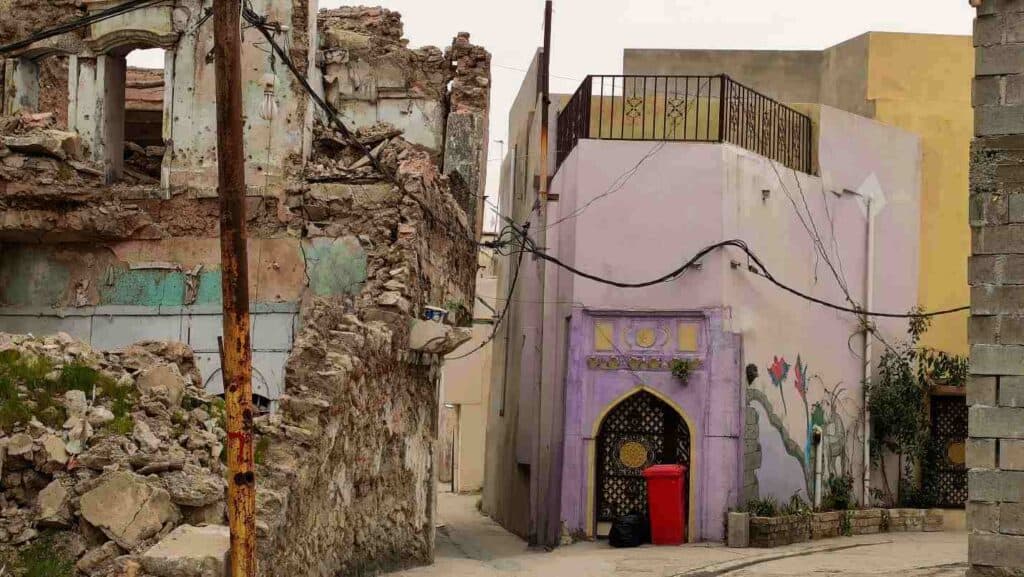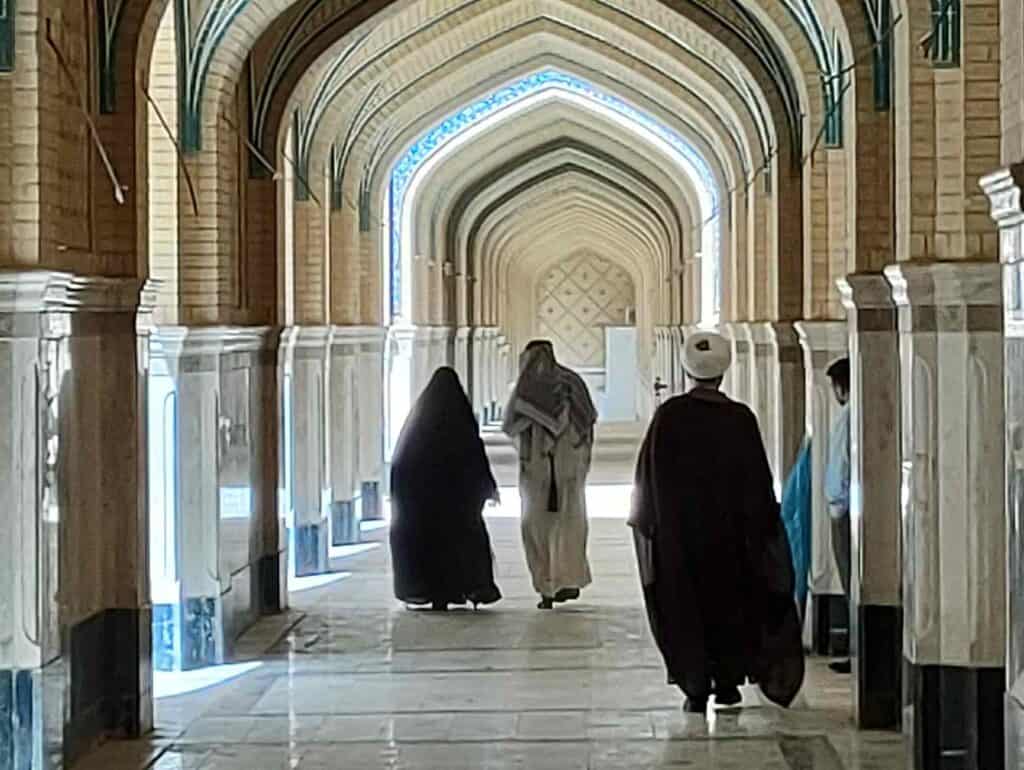Syria is not the same as before, but there is so much more behind how you imagine it through the lenses of the media. Despite the large-scale damages, the ancient heritage is still fascinating and Syria has so much to offer. While it is partly covered by desert, it also has mountain ranges with lush vegetation, thousands of years old archeological sites that were once part of Mesopotamia, and the most authentic bazaars in the Arab world. Syria is proud of the coexistence of different cultures and religions and always gives a warm welcome to foreign visitors.
All you need to know before traveling to Syria
Since Syria is officially still in war, incidents still happen, but most of the country is under the government’s control now and is open for tourists. You cannot visit the whole country, however, even what is accessible gives you a chance to spend one or even two weeks in Syria on an organized tour. Although independent travel has been permitted again, joining a tour with a local or foreign company may be your best option to travel to Syria due to security issues, permissions and also to get a better understanding of recent events and ancient history.
Here you find a good overview of what you can visit in Syria in 2024 that will help you plan your trip.
Damascus
Damascus is the most authentic Arab city in the Middle East thanks to its amazing old city, which has been classified as UNESCO World Heritage since 1979. Early travelers described it as an earthly paradise, but by now, the constructions had absorbed the oasis in which Damascus was initially built. It claims to be the oldest continuously inhabited settlement in the world, 9000 years old, but some say Aleppo is even older. For centuries, Damascus was nothing else than the old city. It is hard to describe how fabulous it is.
Entering the old city, you feel you could walk days in the winding narrow alleys, discovering a hidden gem at every corner: a 7—or 800-year-old hammam that is still part of daily life, a caravanserai where traders once exchanged their precious products or a madrasa. Then, you get absorbed by the labyrinth of souks, which are always busy with locals.
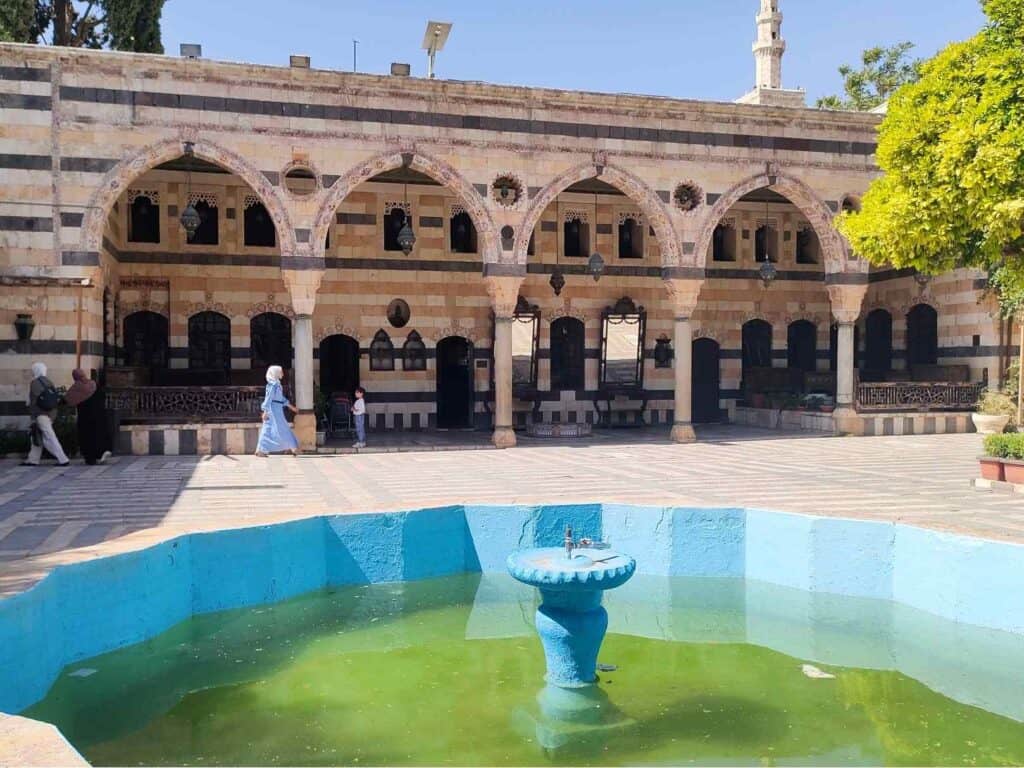
When walking on the famous Straight Street, you recall that this is the place mentioned in the Bible.
And once you enter those unique Damascene houses—hidden behind high walls—a small paradise opens up with absolute tranquility and a breeze even on the hottest days. Many of them function as hotels or restaurants.
Don’t miss the 300-year-old Azam Palace, one of the largest and most magnificent Damascene houses, and the Khan As’ad Pasha caravanserai in the old city.
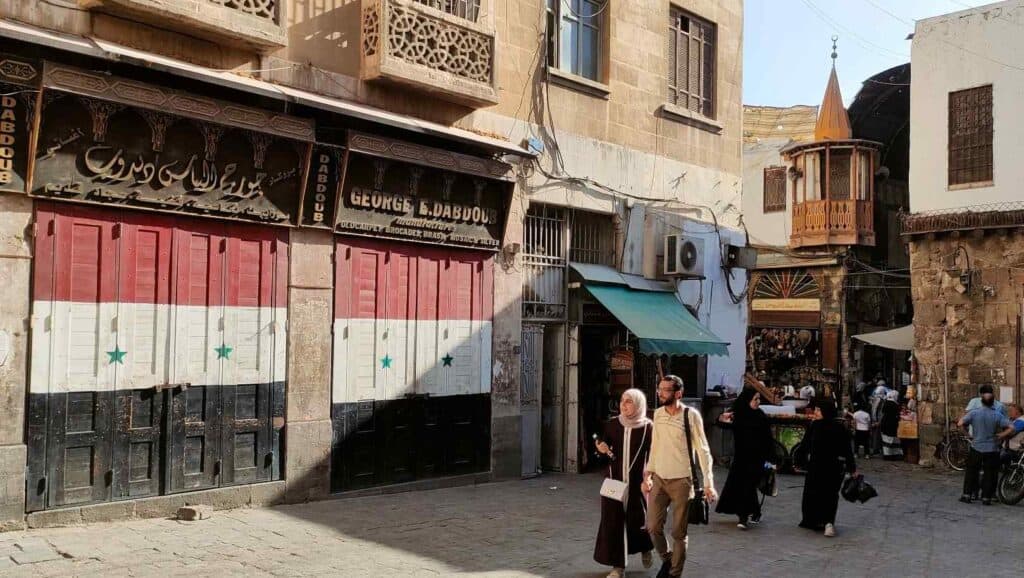
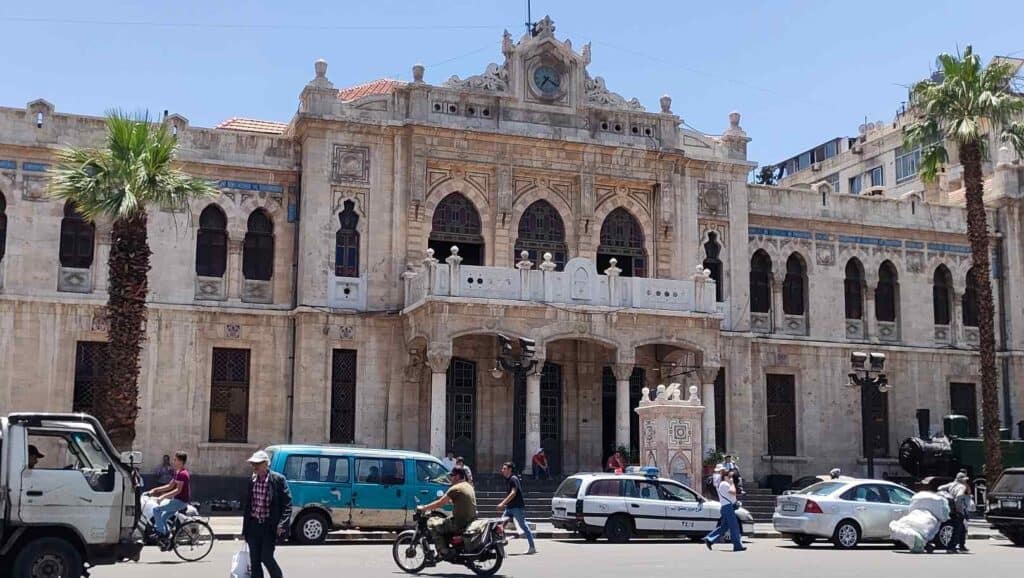
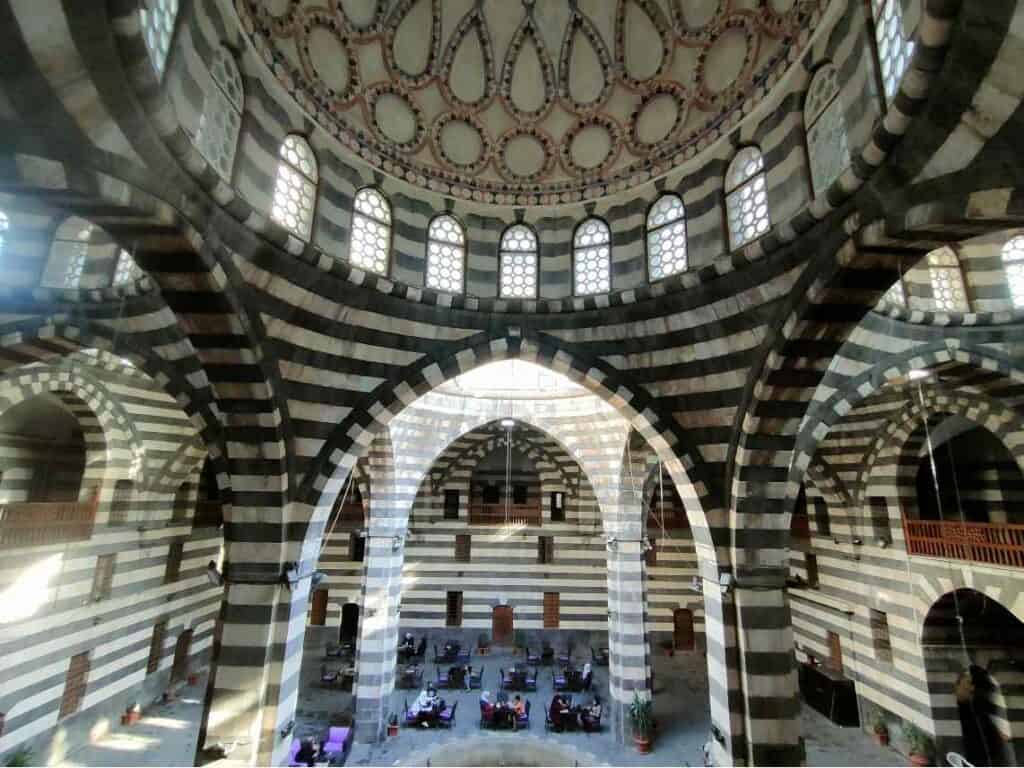
The bustling Souq al-Hamidiyya takes you to the Umayyad Mosque, considered the holiest place in Islam after Mecca, Medina, and the Dome of the Rock at Jerusalem. This single building sums up the city’s entire history: an originally pagan temple converted into a Christian cathedral and then the largest mosque of that time with unique, colorful mosaic decoration. Nearby Adeliyya and Zahariyya madrassas and the tomb of Saladin, one of the most famous rulers of Syrian history, are also worth a visit.
Stroll around the Christian district and visit the St Ananias church, named after a disciple of Jesus who restored Saul’s sight according to the Bible.
The Shia Mosque dedicated to Sayyida Ruqayya (the daughter of Imam Hussein) recalls the splendor of the famous mosques in Karbala and Najaf on a much smaller scale.
For some, it is interesting to visit the 6th October 1973 panorama museum, designed by a North Korean artist and dedicated to the heroic war against Israel when Syria reoccupied part of the Golan Heights. It is also a memorial museum for former president Hafez al-Assad. Outside the museum, Soviet, French, and American tanks are also on display.
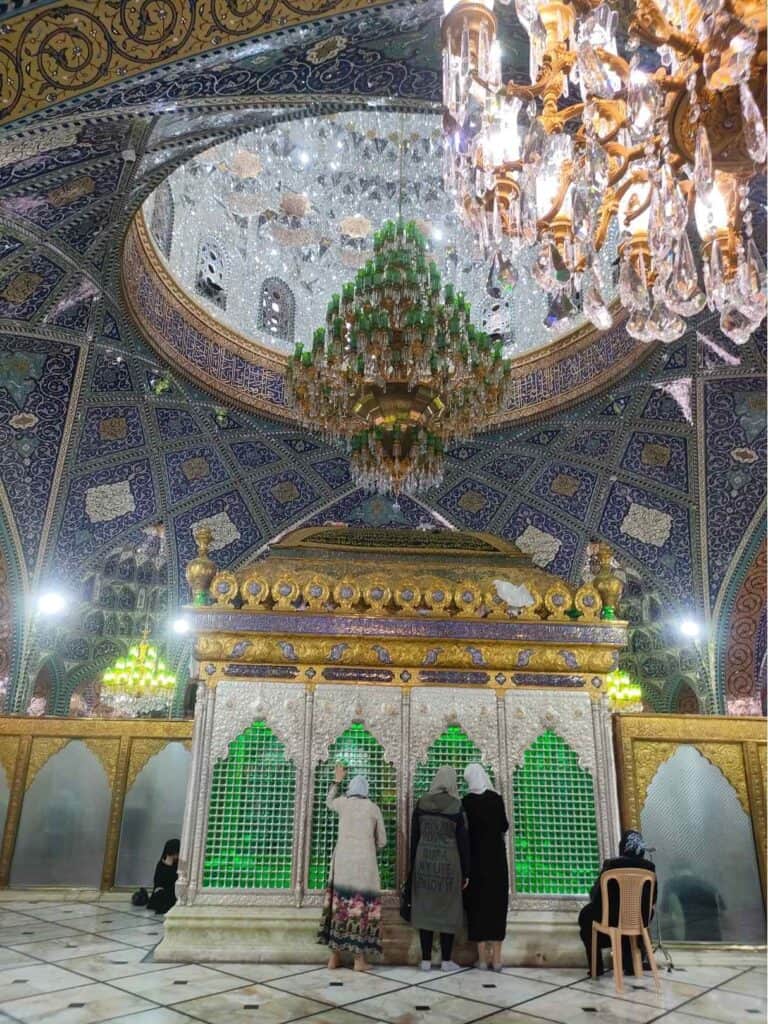
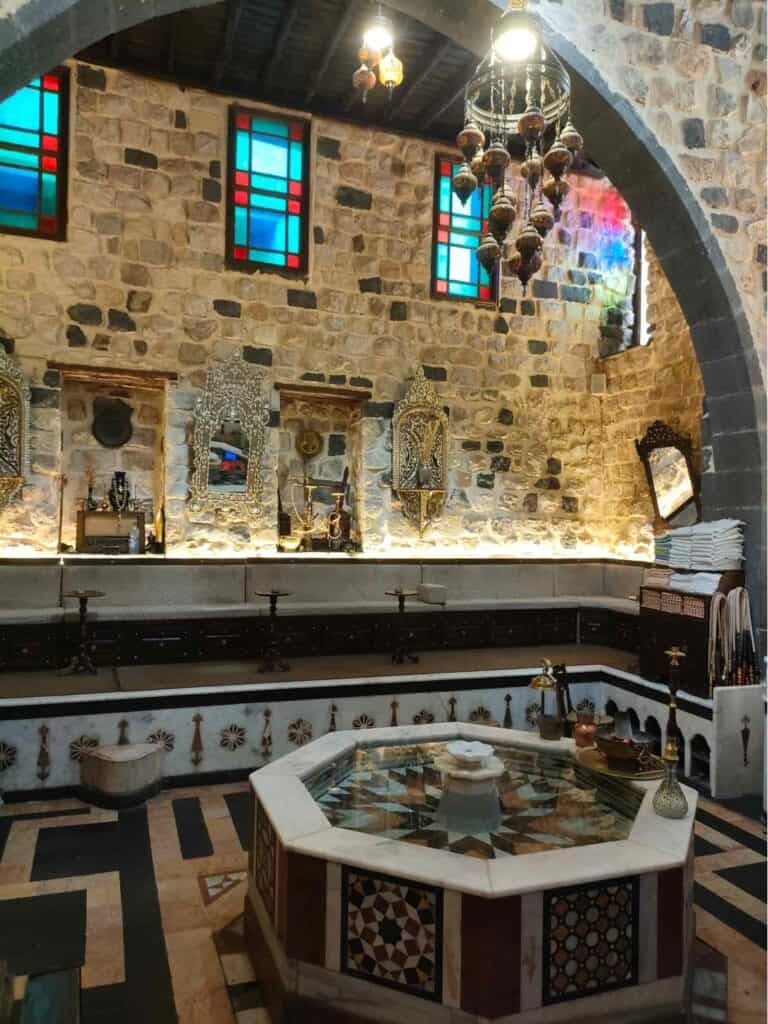
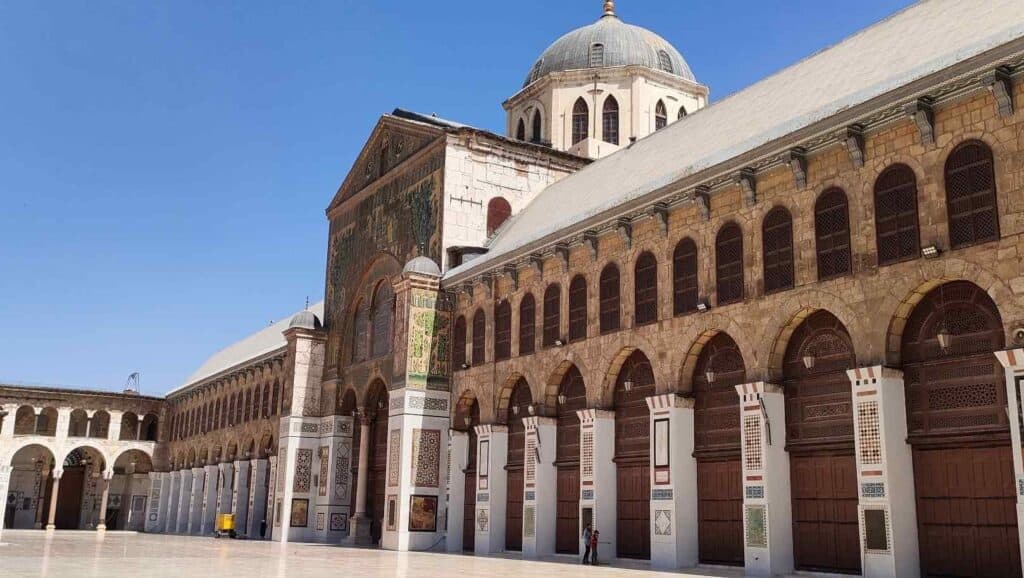
The modern city, which is itself a couple of hundred years old, also has some attractions that you can reach on foot. Here stands the Hejaz railway that carried the pilgrims to Medina from 1908 to 1920. The locomotive is still on display.
Unfortunately, the sections displaying the relics of its most ancient history, including the oldest alphabet, have been closed since the war. However, the Greek and Roman artifacts, especially the tombs of Palmyra, which were decorated with impressive sculptures, made the National Museum worth visiting. It may be fully open soon.
While the economic problems become apparent as the city turns partly dark after sunset, I never expected to find such a nightlife with pleasant cafes and restaurants where smoking shisha is popular among both men and women.
If you have a car, you can visit a viewpoint, a trendy shopping mall, or an opera house to see a spectacle.
Palmyra- the “bride of the desert
Palmyra is the site that has always made most tourists come to Syria. The “bride of the desert” between two great powers, the Romans in the East and Sassanians in the West, was once a meeting point for all kinds of people. It maintained its wealth and prosperity for hundreds of years, the wealthiest and most beautiful city on the Silk Road, manifested by its monumental buildings. It was a divine city.
Palmyra exists thanks to a desert oasis fed by underground springs that have provided an attractive setting for the ruins. Its name also comes from the Roman “Palma,” meaning palm tree.
All you need to know before traveling to Syria
SafetyWing is a recommended and affordable travel insurance. IATI is another reliable travel insurance that you can use regardless of your nationality in Syria. However, local travel agencies might include travel insurance in your tour package. This was the case with me when I traveled with Syrian Guides.
Palmyra had a famous queen, Zenobia, who, during her short rule, made a lasting impact on the City. Palmyra finally lost its prominent role when Emperor Aurelian marched his armies into the city in 273, forcing Queen Zenobia to surrender. Palmyra never fully recovered from this plundering. After that, it was no longer a military stronghold. Bypassed by the main caravan routes, the city gradually fell into oblivion.
The road to the archeological site leads through modern Palmyra, which was heavily destroyed and abandoned. Many sad stories are linked to Palmyra, like the director of the museum who refused to leave the place, which cost him his life.
Unfortunately, I literally had Palmyra for myself. It is hard to imagine that once a thousand tourists arrived daily.
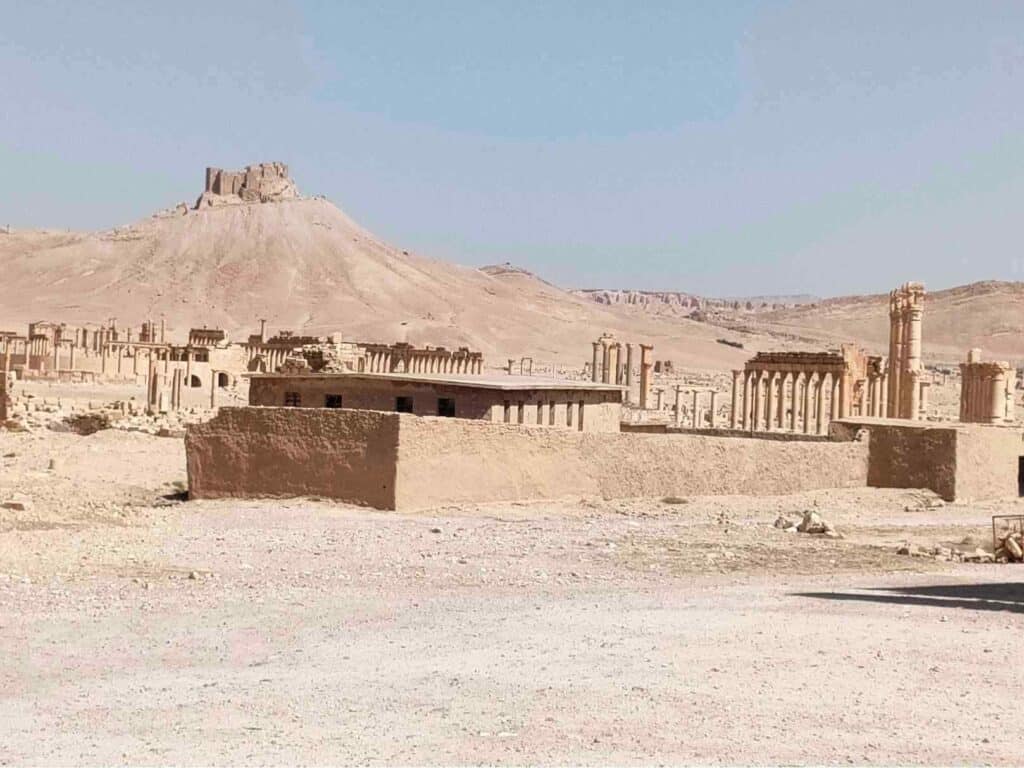
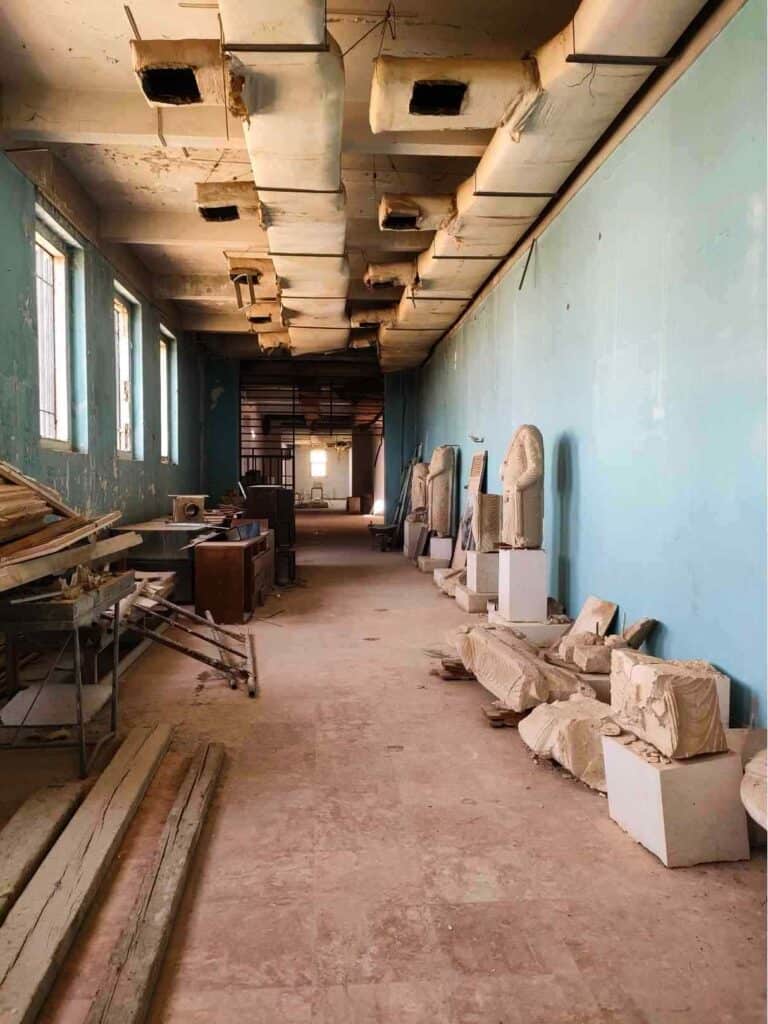
Most of the ruins date back to the 2nd and 3rd centuries when Palmyra was in its heyday due to its strategic location, a halfway mark on two important trade routes. Commerce lay in the hands of the Palmyrenes, who carried the traffic of the Persian Gulf from Babylon to Syria. The decline of Petra and the Nabatean Kingdom left Palmyra even more unchallenged. Palmyra became rich thanks to the heavy duties they levied on traders for 200 years, reflected in its splendid monuments.
A unique Palmyran style developed here: a blend of Persian, Egyptian, Babylonian, and Phoenician with a Hellenistic and Roman artistic and architectural framework. They used the oriental custom of showing the figures fully frontal, never in profile, with timeless and less realistic facial expressions. The ladies’ immaculate hairstyles, headdresses, clothing, and jewelry are unique to Palmyra and have not been seen elsewhere.
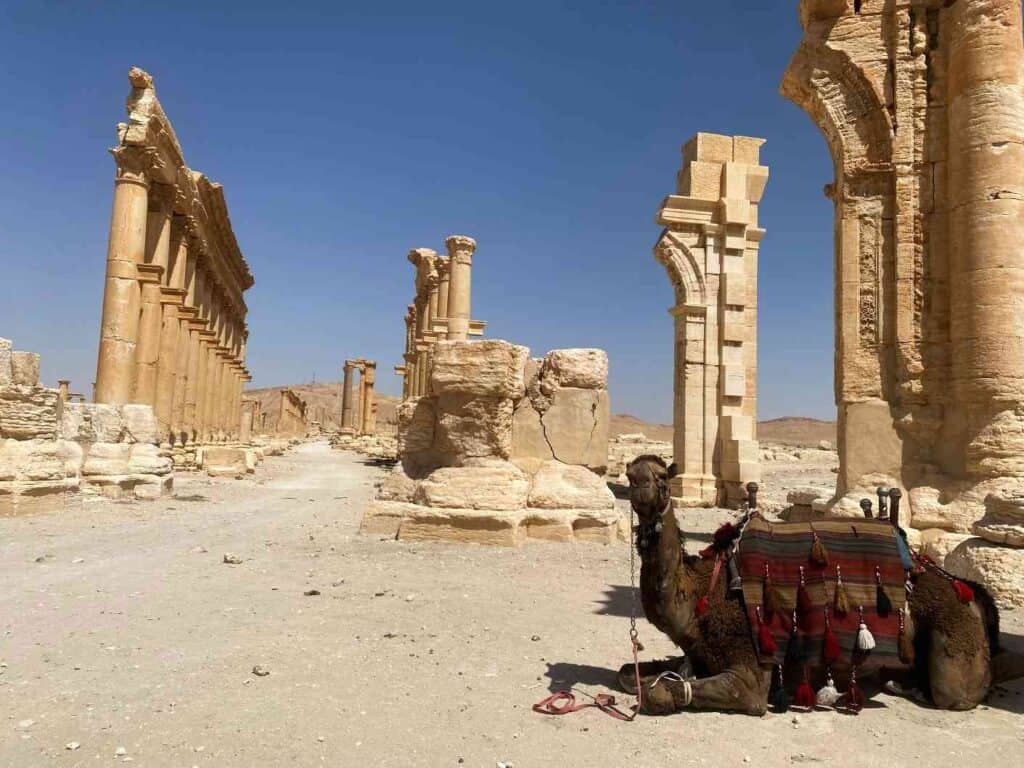
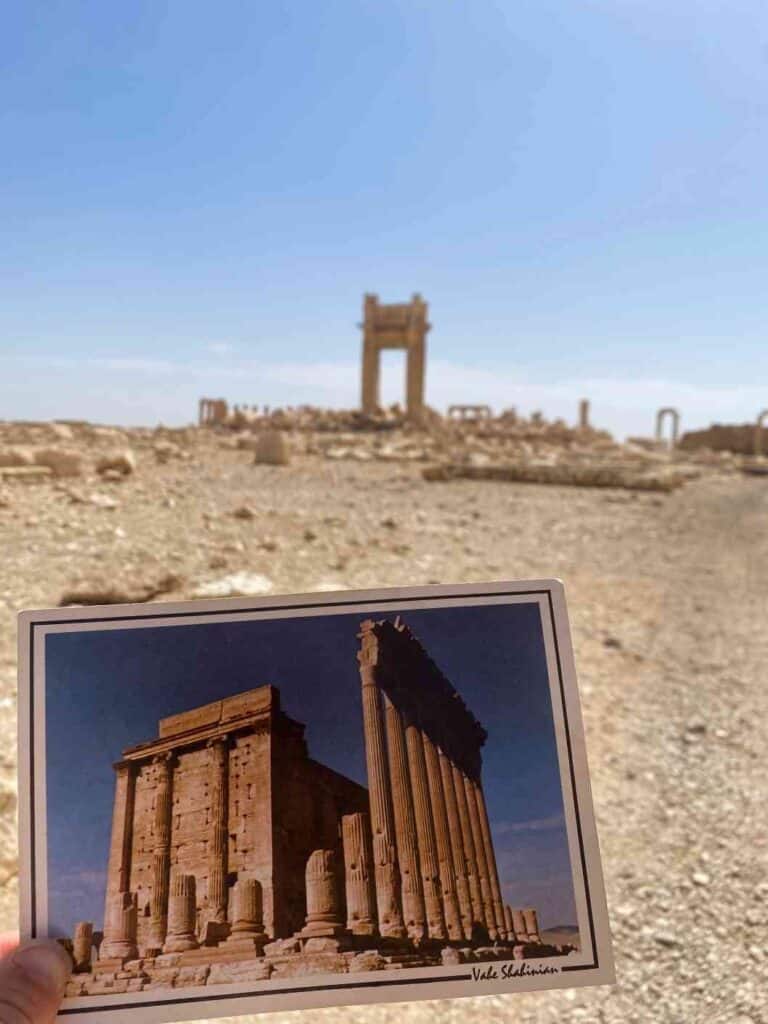
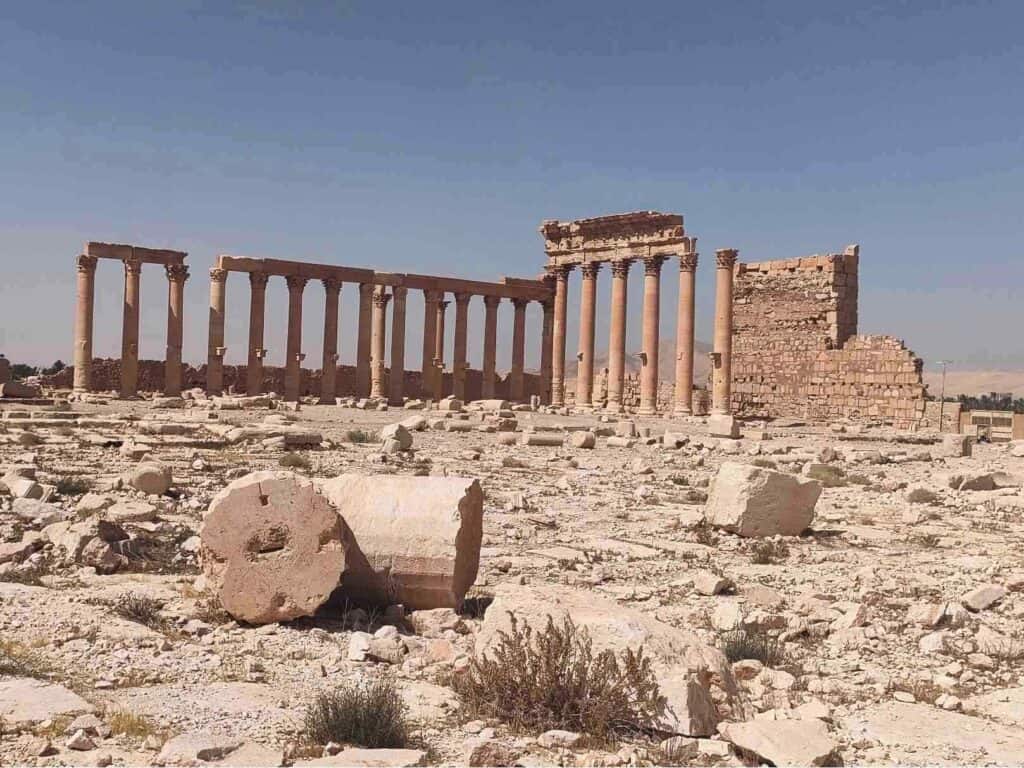
Not surprisingly, the French started the excavations in 1929, but first, they had to convince the villagers to leave the ruins and move to what is now Palmyra city. The ruins lay forgotten for six centuries, increasingly swallowed in the sand.
The most impressive parts were the Bel sanctuary, dating to the 2nd -3rd century, and the colonnaded street. The Palmyra Theatre is not the largest, but it is where the famous Palmyra festival, which includes horse-and-coming races, has taken place every year since 1993.
Only 70% of the original site remains, but I’m still impressed with what I saw in 2024.
How to visit Palmyra?
Before 2011, tourists could stay in one of the hotels in Palmyra and absorb the beauty of the expansive ruins of this Roman city by sunset and sunrise. None of the hotels exist now; if they do, they are used for military purposes. It means you can only visit it on a day trip that involves a long drive.
Christian monasteries and churches (Maaloula, Seydnaya, Mar Musa)
Maaloula is a famous Christian village only an hour away from Damascus. Syria was one of the places where Christianity first developed. It was in Antioch (modern Antakya, Turkey) that the followers of Christ were first called Christians. The first Christians were persecuted under the Roman Empire. Then, in 313, Emperor Constantine issued the Edict of Milan, giving them the right to practice their faith, and in 380, Emperor Theodosius declared Christianity the Roman Empire’s official religion. When the Roman Empire split under the Byzantines, Christianity divided into several churches after complex theological disputes over the nature of Christ. They founded different churches, such as the Syrian Church, Maronite Church, Armenian Church, Nestorian (Chaldean), and Egyptian Coptic Church.
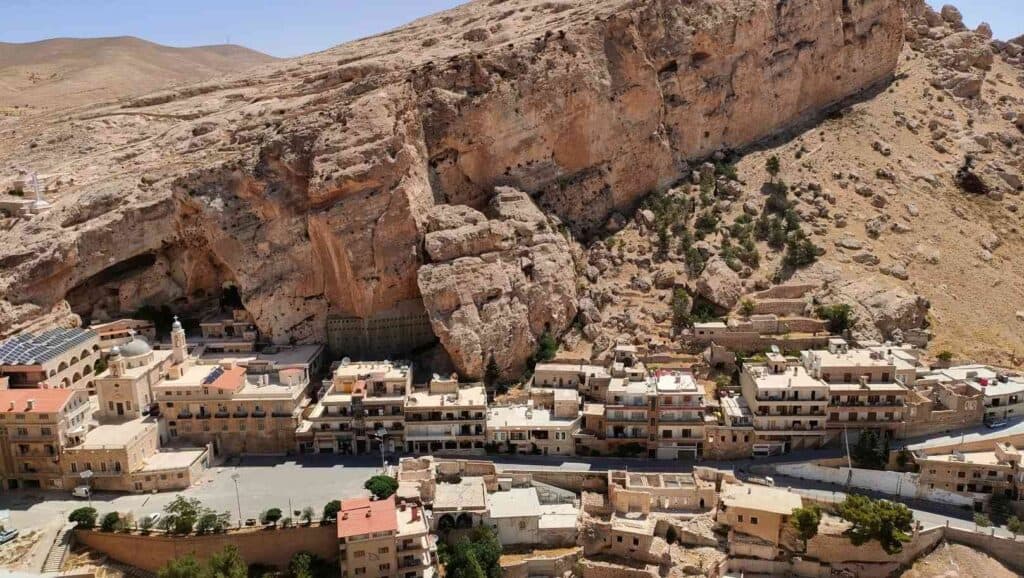
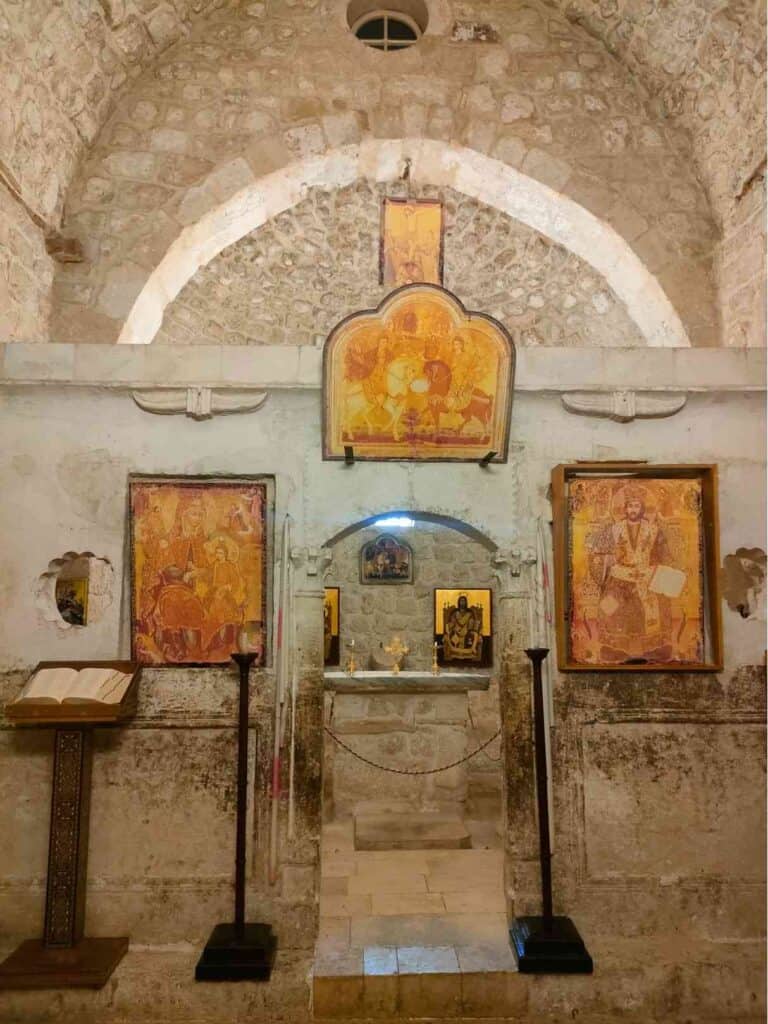
Maaloula is one of the three villages where people still speak Aramaic, the language of Jesus, or at least one of its dialects, in their daily lives and try to keep it alive. Even the village name means “entrance” in Aramaic.
The St. Bacchus and Sergius Greek Catholic monastery has one of the oldest churches in Syria, dating to the 4th century, with pagan rock-hewn altars. Maaloula, including the monastery, was attacked during the war, but with much effort, they restored it and those who could move back. On Holy Cross Day (the night from 14th to 15th September), they lit a fire on the two mountain outcrops surrounding Maaloula to remember when St. Helene found the cross in Jerusalem.
The 5-star Zafir hotel, which overlooks the village on top of the hill, was once a popular place for mainly foreigners to stay. Even in ruins, it is a must-see when you are in Maaloula.
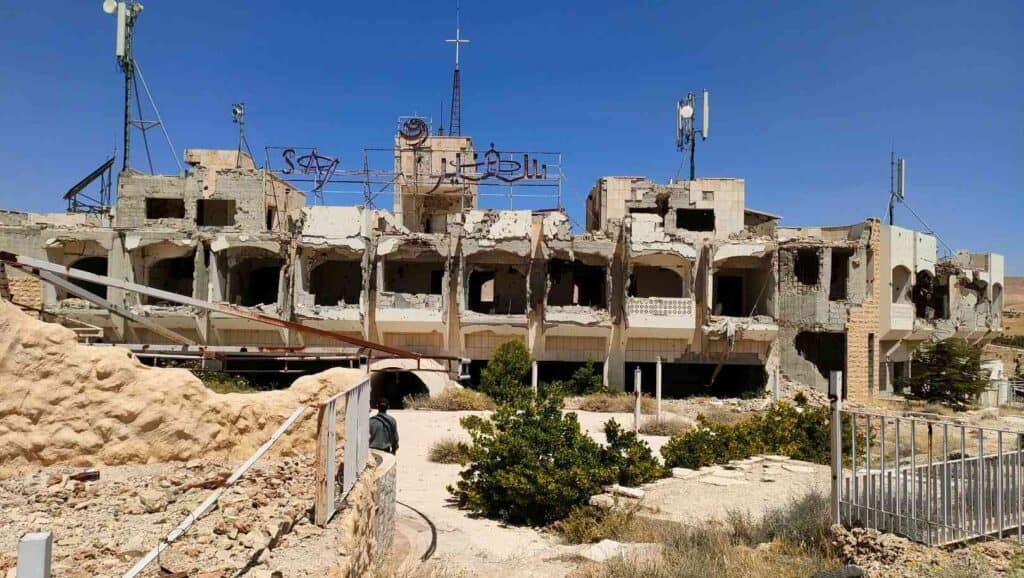
The St. Tekla monastery is also located in Maaloula.
The road to this monastery leads through an impressive gorge. According to the legend, St.Tekla was fleeing from the fury of her pagan father when she found herself trapped before the mountain, but she prayed so ardently for safety that the cliffs split apart and let her through. The convent seems modern, but its foundation is said to be the oldest in the world. St.Tekla is buried in a tiny chapel in a cave, and pilgrims come to pray.
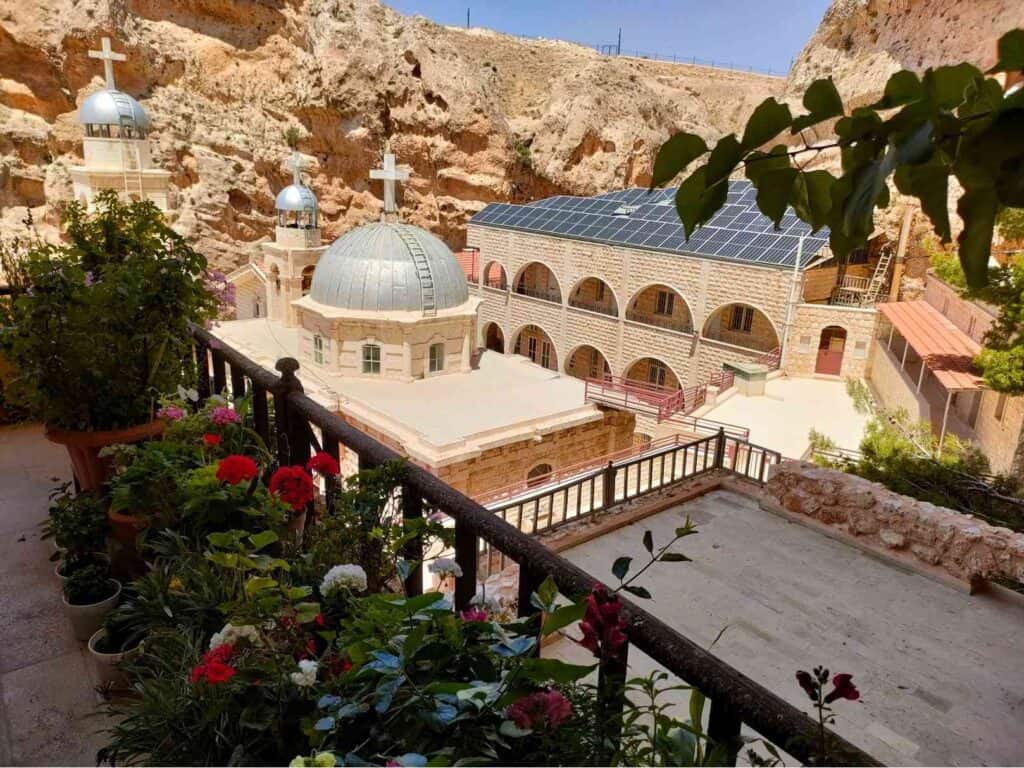
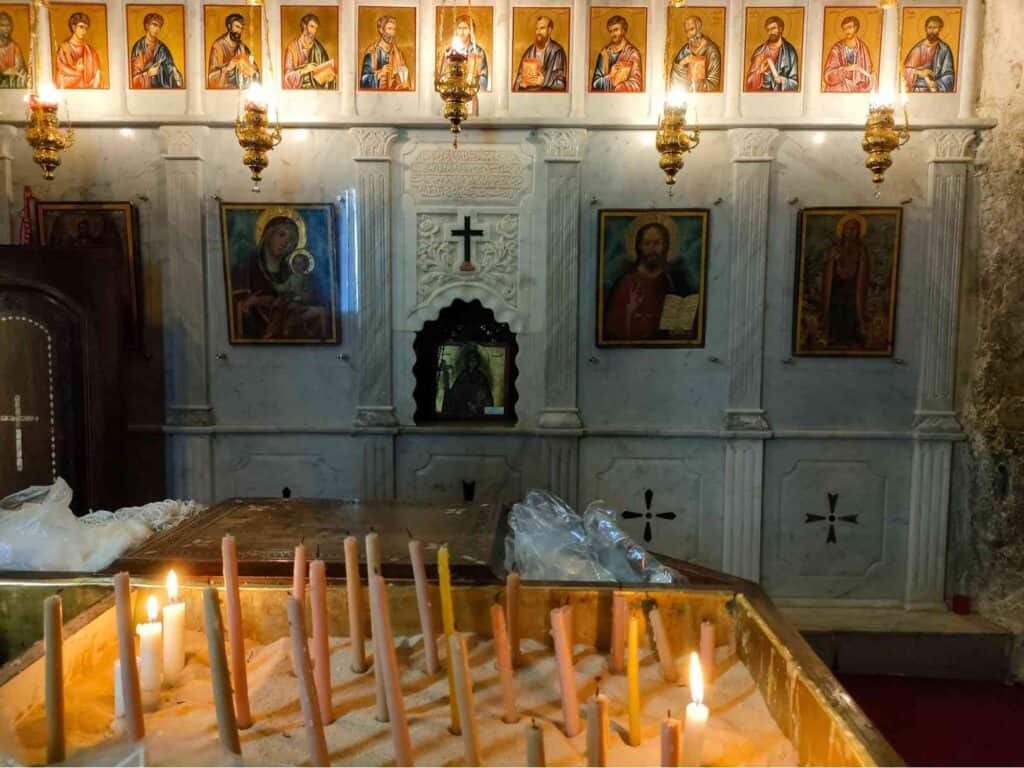
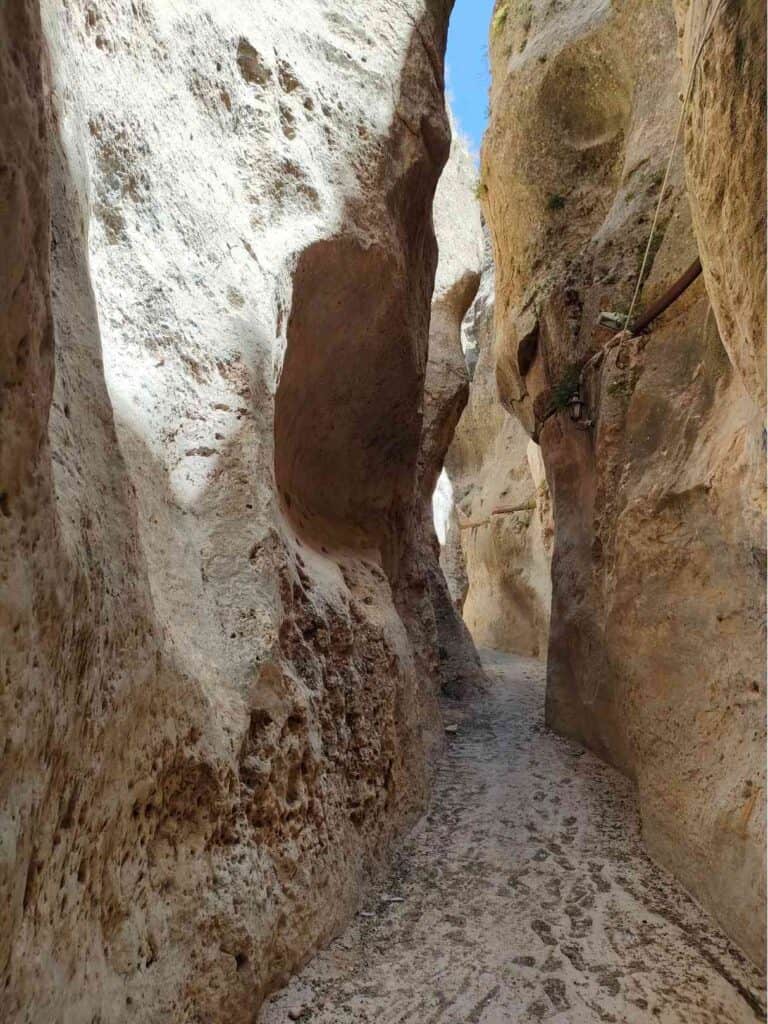
In Seydnaya stands the Greek Orthodox Convent of Our Lady of Seydnaya, the second holiest pilgrimage place for Greek Orthodox Christians after Jerusalem. It is the venue for the Virgin Mary festival on 8 September every year. The monastery was built at the spot where Emperor Justinian was about to arrow a deer when it transformed into an icon of the Virgin Mary. A voice told him to build a church on this spot. It contains a miraculous icon said to have been painted by St. Luke.
It is a longer drive to reach the remote and extraordinary Mar Musa (meaning St Moses) monastery. Perching on the cliff with hundreds of stairs leading up there provides an authentic monastic experience. They don’t let you take photos of the people to keep the place reserved for them and not so publicized. There is no internet or network except for one room for emergencies. They have a surprisingly extensive library inside the cave, with books collected during the last decades. They operate solar panels. Thanks to the enthusiasm of Father Paolo, an Italian Jesuit who discovered the place in ruins in 1988 and spent three years with the local community restoring it and bringing it back to life. He intended to make this place to bring Muslims and Christians together.
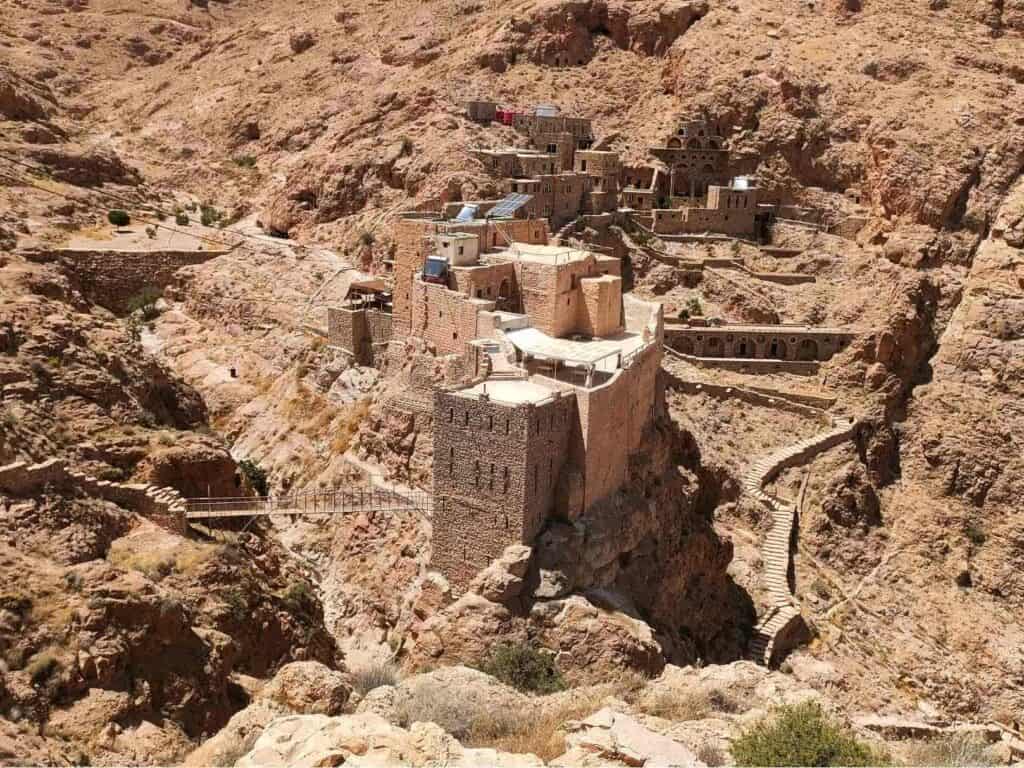
This monastery offers free accommodation and free meals, though contributions are welcome.
Homs
Homs is strategically located in the middle of the country, at the crossing points of the main roads connecting the desert with the coastal mountains and the sea. Most of the country’s factories, including an oil refinery, are also located here, so gaining control over it during the war became important. In Homs, the signs of destruction are still very much visible in the center.
The Church of the Girdle is where they preserve this unique relic, the girdle of the Virgin Mary. Also, here are the remains of an ancient underground church dating back to 59 AD.
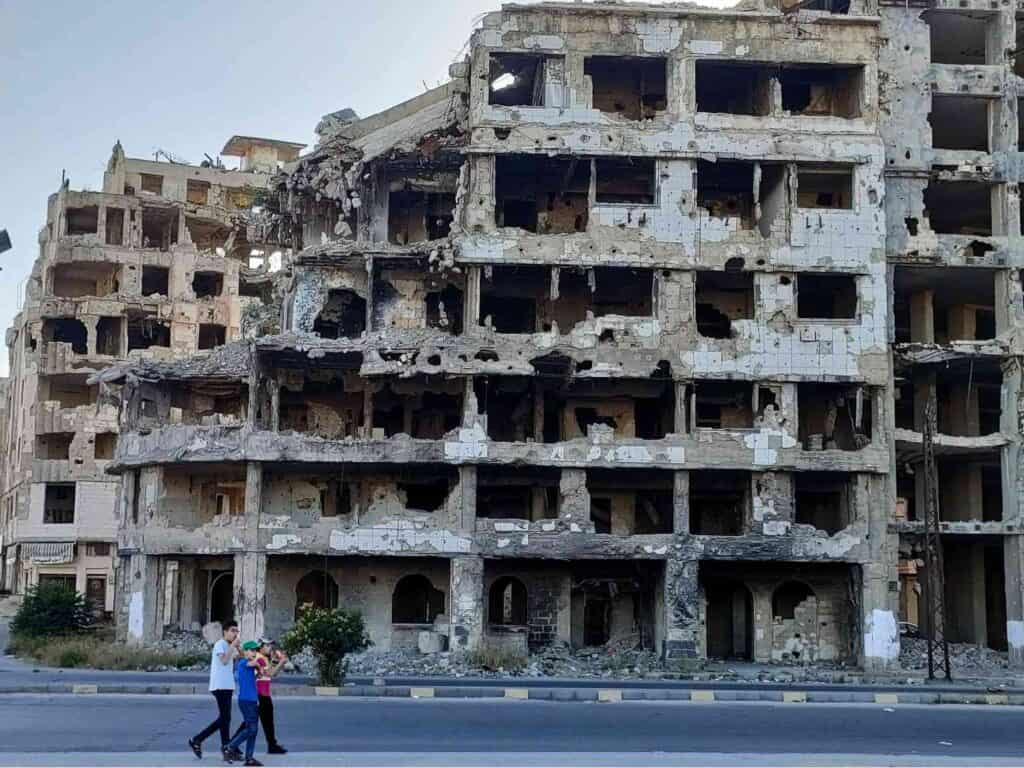
Near the church stands the Jesuit Monastery, where Father Frans van der Lugt is buried. He was a well-known priest who refused to leave Homs during the war, saying that this was when people needed him the most. He was assassinated in 2014. You can see his grave and the underground room where he found shelter with his disciples during the war.
The most famous monument is the mosque of Khaled ibn al-Walid, which was completely destroyed but has been perfectly restored. But the contrast with the surrounding residential buildings standing in ruins is shocking.
It is also worth strolling around the restored old souk in Homs.
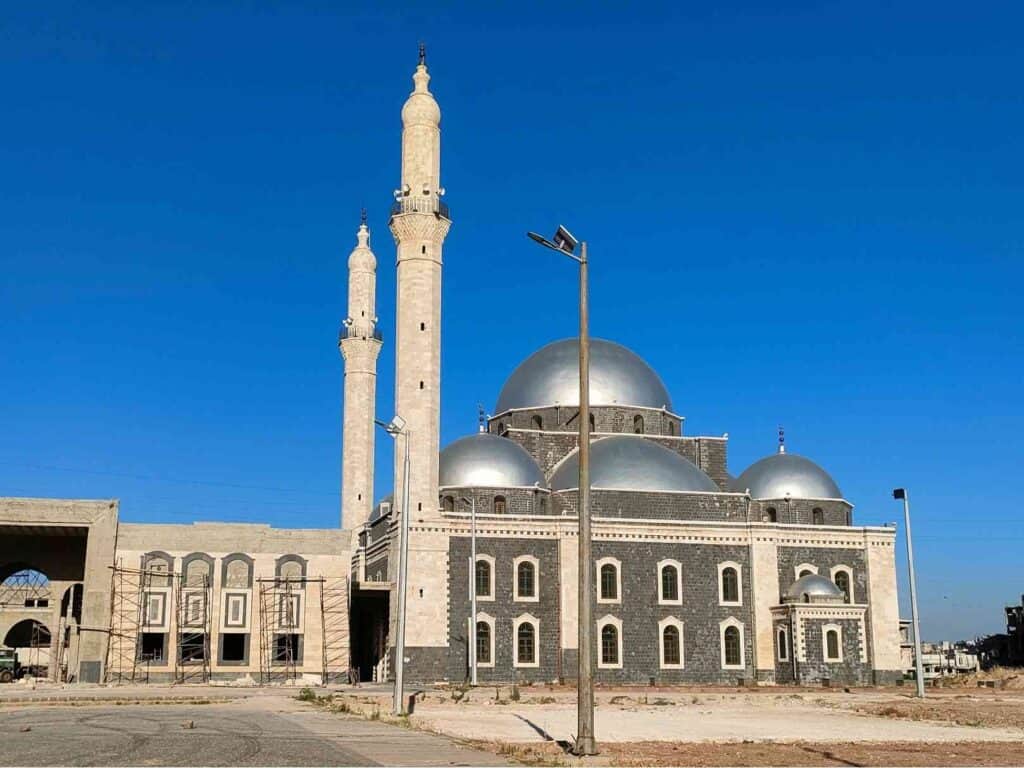
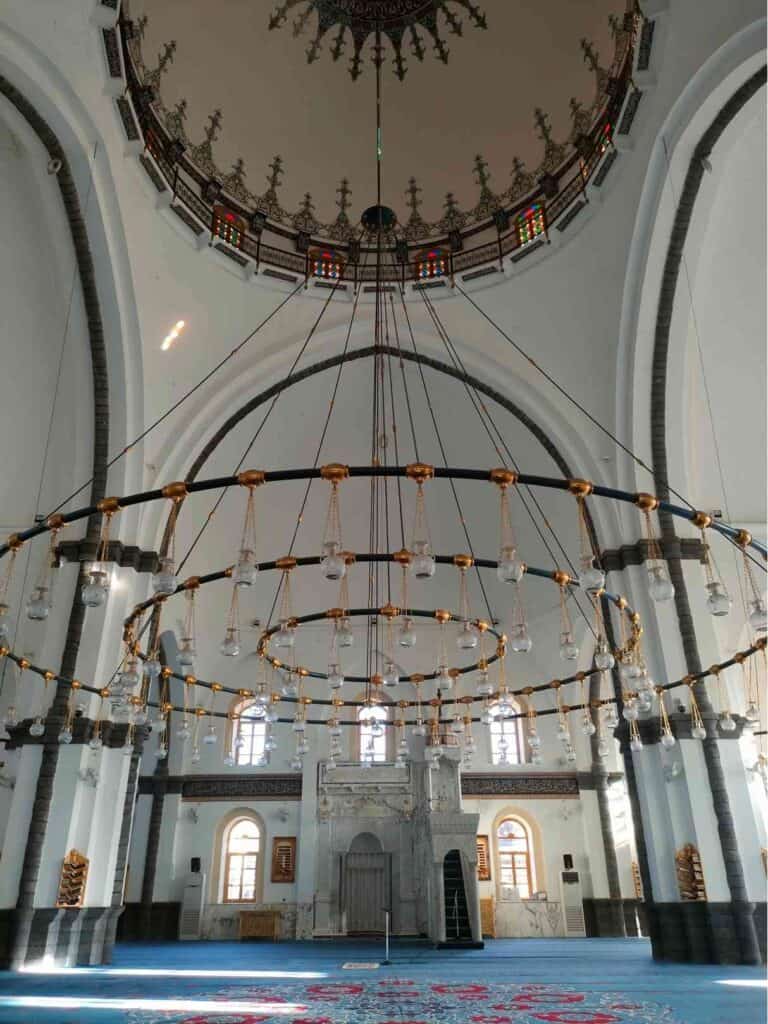
Bosra
The road to Bosra, the second-best-preserved Roman city in Syria after Palmyra, gives a view of Mount Hermon, the highest mountain in Syria. The landscape changes remarkably and becomes dominated by dark basalt stones. This is why Bosra was constructed of dark basalt stone in contrast to the pale limestone of Palmyra.
Bosra was a linking point between East and West, an influential city in the Mediterranean East, and thus the center of many civilizations. Nabateans, whose original capital was at Petra in Jordan, made Bosra the capital of their newly created Province, Arabia, and most of its ruins date to this time. Emperor Trajan built a network of roads at this time, linking Bosra to Damascus, Amman, and Aqaba. Thus, Bosra found itself at the heart of the trading crossroads here and to the west between Mesopotamia and the Mediterranean.
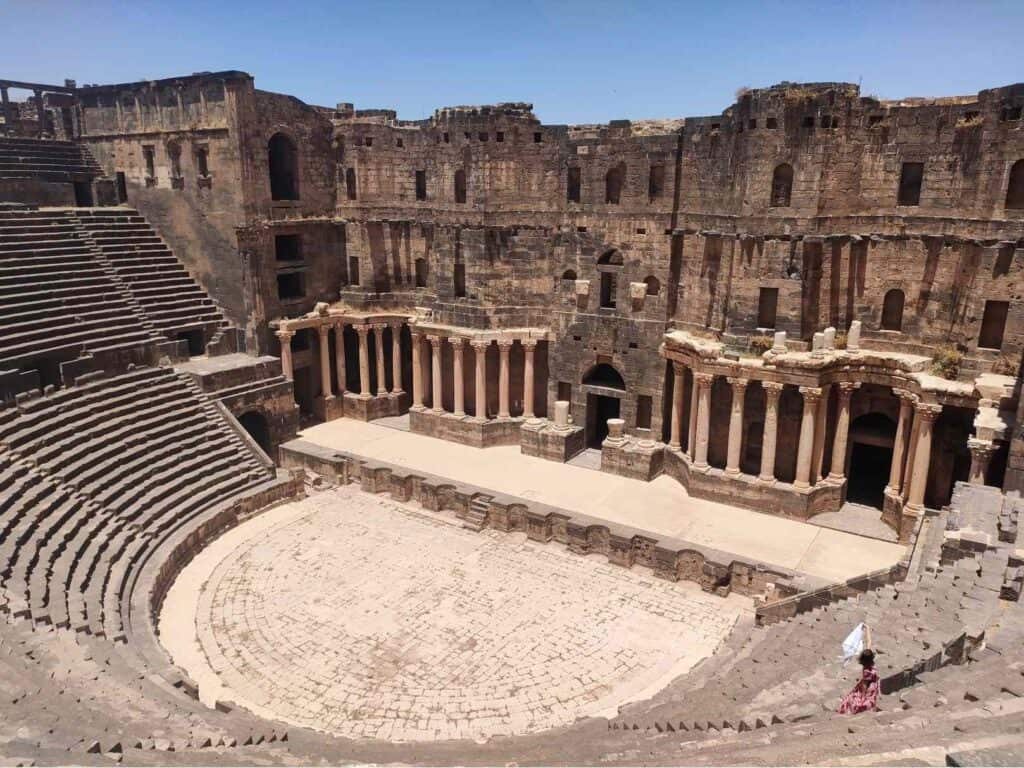
Bosra gradually lost its importance after the Mongol attacks as the caravan and pilgrimage routes to Mecca moved to safer areas. With the ensuing depopulation, local agriculture was neglected, and the entire region sunk into oblivion.
When you type Bosra on the internet, you will only find photos of the Roman theatre, which is truly impressive as a UNESCO World Heritage Site and the most intact Roman theater in the world. The theatre, dating to the 2nd century, seems all the more dramatic thanks to the dark basalt stone, and because it is concealed inside a 13th-century Ayyubid fortress, so many passed by in history without noticing there is a theatre inside.
The theatre could accommodate 15,000 people but was so well organized that it could be emptied in 15 minutes through the several exits and entrances. One reason why the theatre could be preserved in such a good state is that the interior became filled with sand over the centuries. It took some 20 years to clear it in the 1960s and 1970s. The other reason is that it was converted into a fort in the 13th century.
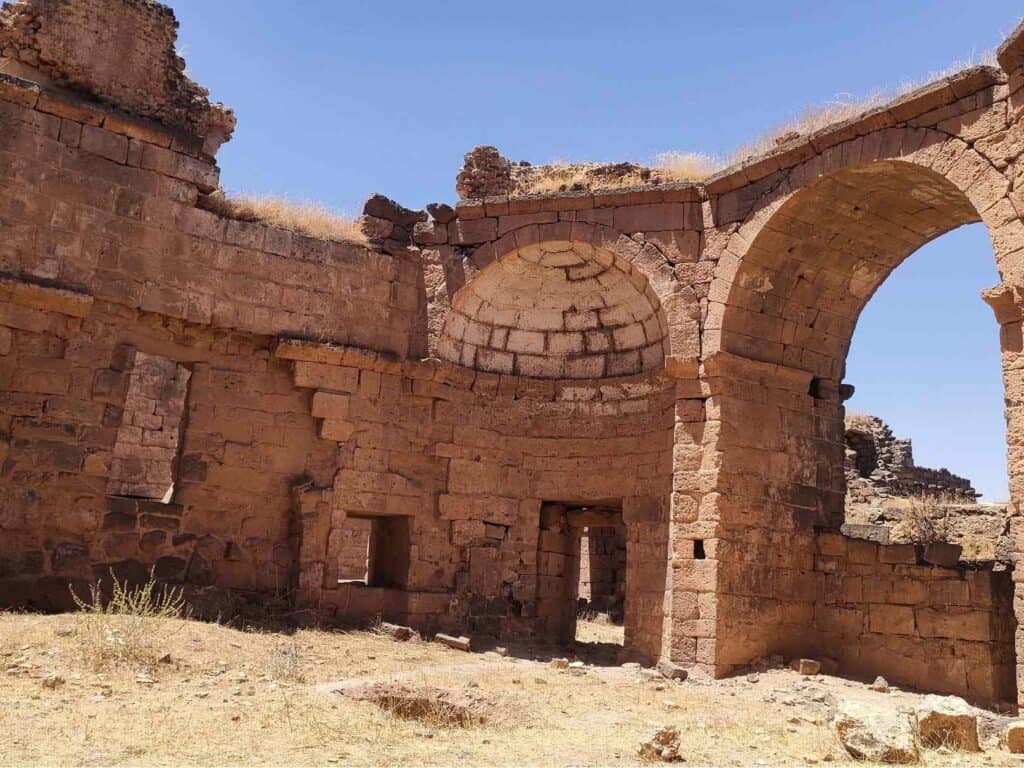
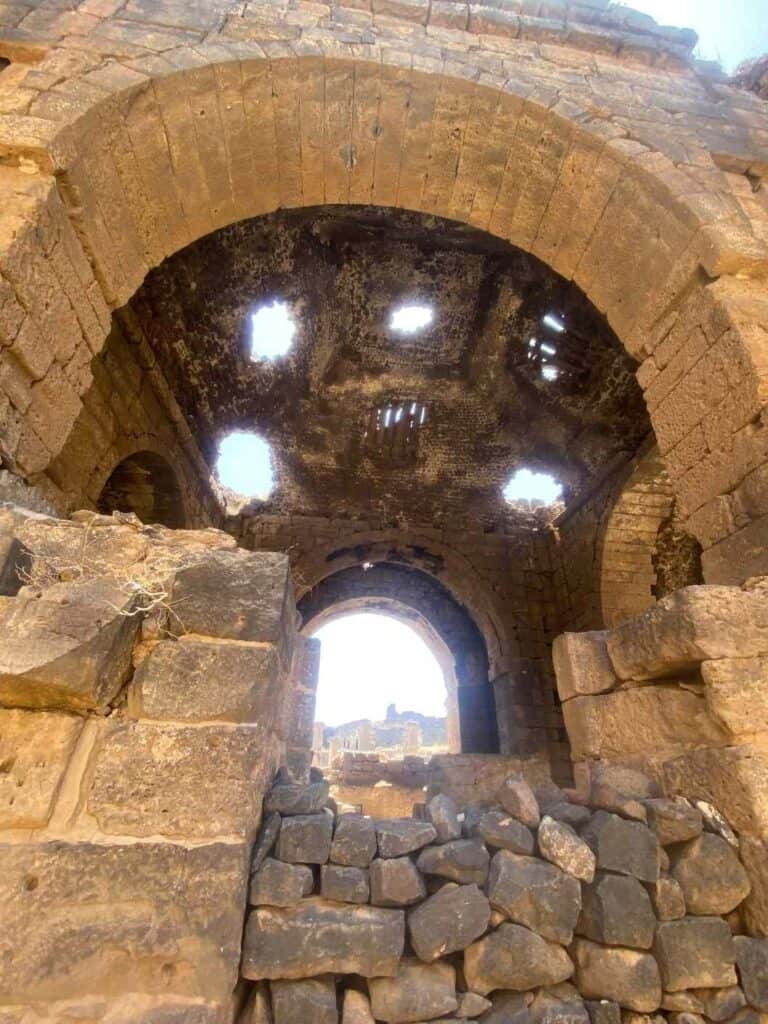
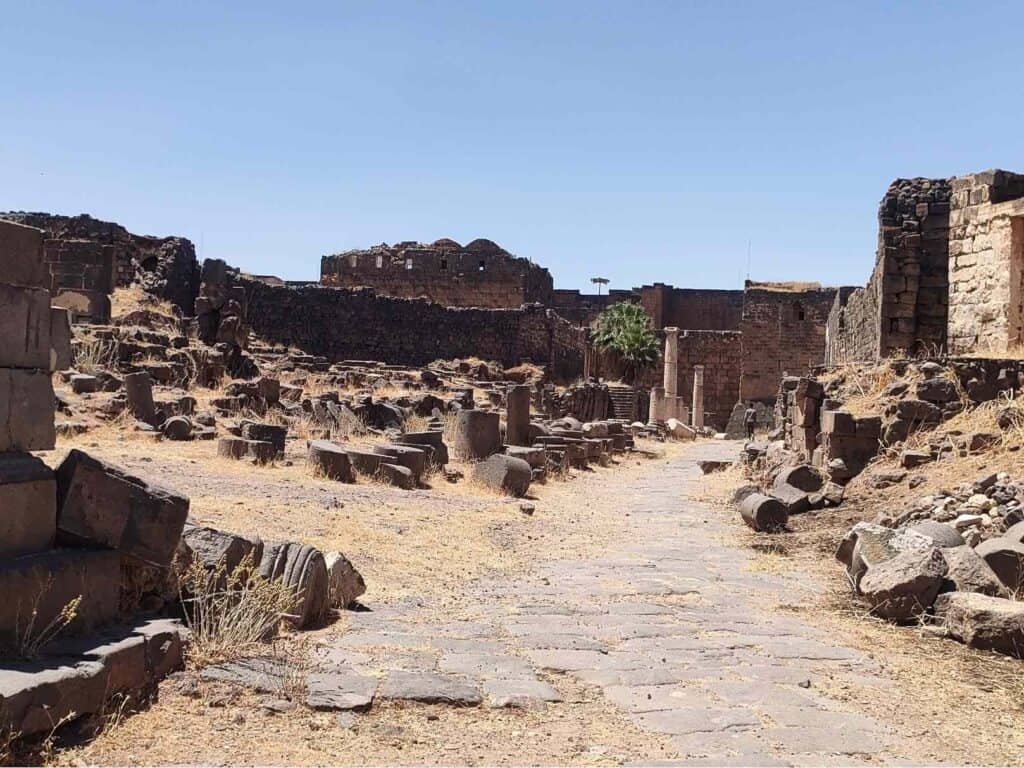
Like other Roman theatres, it also has perfect acoustics, and actors don’t even have to raise their voices to be heard in the top rows.
Hopefully, the famous Busra International Festival will take place again soon as it once attracted crowds of people from all over the world.
The theatre was the highlight, but you will be impressed by the extensive remains of an entire Roman city, which was only slightly damaged by the war.
Even those who are less attracted to wandering among ancient ruins will be impressed by Bosra. It exceeded all my expectations.
Aleppo
The old city’s winding alleys and the bazaar’s labyrinth had a medieval atmosphere like no other in the country. Aleppo is also claimed to be the oldest permanently inhabited city in the world.
Aleppo’s history is all about trade. It has been a center of commerce since Roman times, and it has remained so until now. Over centuries, Aleppo served as a stopping place for trade routes from the Mediterranean inland to Mesopotamia and all the way to China along the so-called Silk Road. As the Roman Empire declined, it became less traveled, but after the Mongol invasion during the Ottoman Empire, it prospered as a commercial center again and became Syria’s largest city.
Aleppo’s most famous landmark is the citadel, which rises on top of a volcano-like mound and offers a fantastic view of this magnificent city. A steep ramp leads through the impressive entry gate, which is hoisted with the Syrian flag. The citadel was built by the son of the famous Saladin, the founder of the Ayyubid dynasty, as a base for defense against the Crusaders. The 800-year-old structure is not an empty military fortress, but 100,000 people lived there not long ago. The citadel was the city! Hammams, mosques, royal residences, residential areas, and prisons are all part of that.
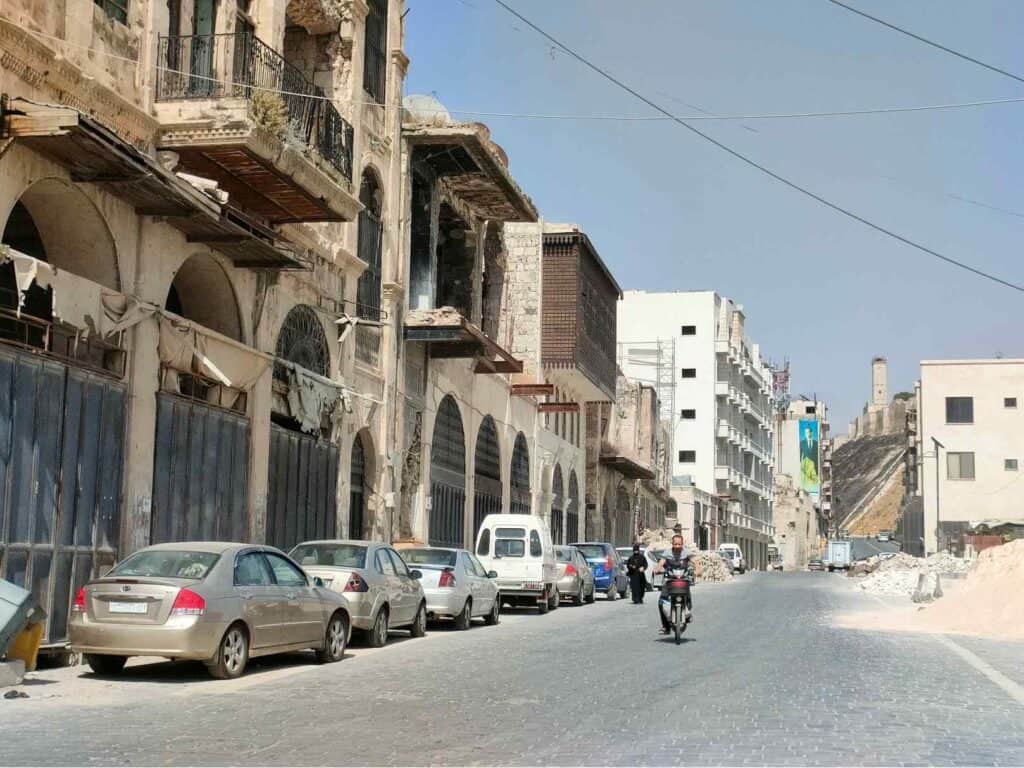
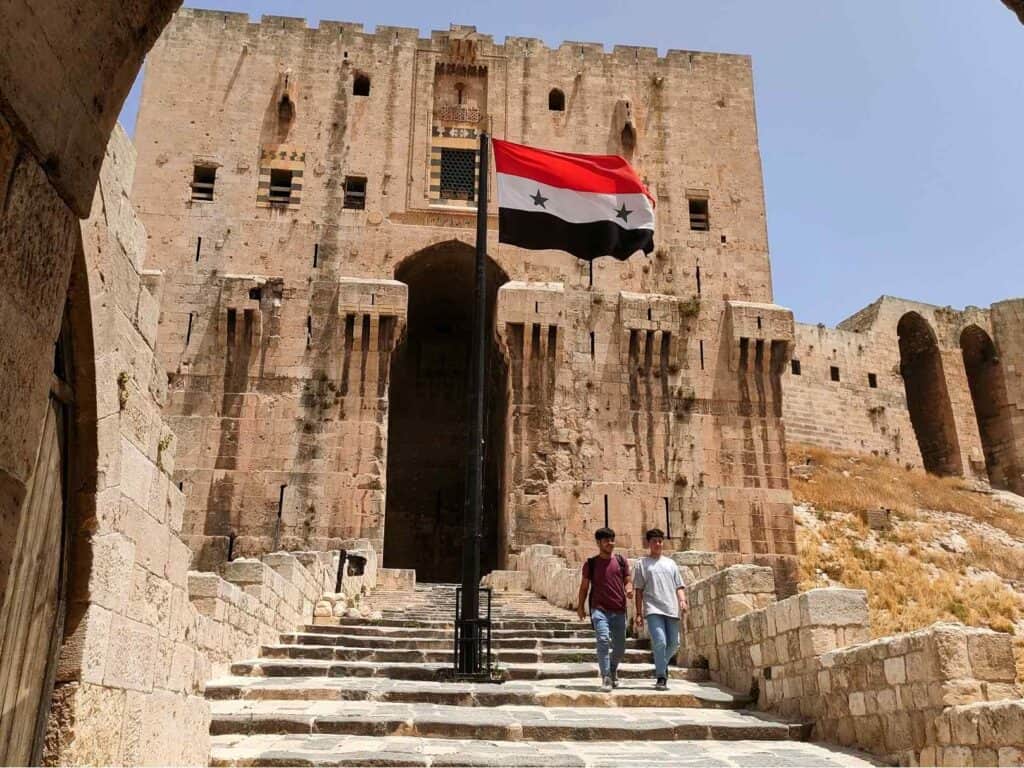
Aleppo was largely destroyed during the war, and the signs of destruction are still clearly visible, unlike Damascus, where mostly the suburbs were affected by the war. Due to the lack of people and financial resources, reconstruction advances slowly. Despite that, amid the ruins, the beauty of Aleppo is still seen, and the people are eager to rebuild the city.
The winding alleys of the souk were 10-12 km long and contained thousands of shops, most of which were destroyed. Some parts have been restored and are busy with locals coming to purchase, while other parts are still in ruins.
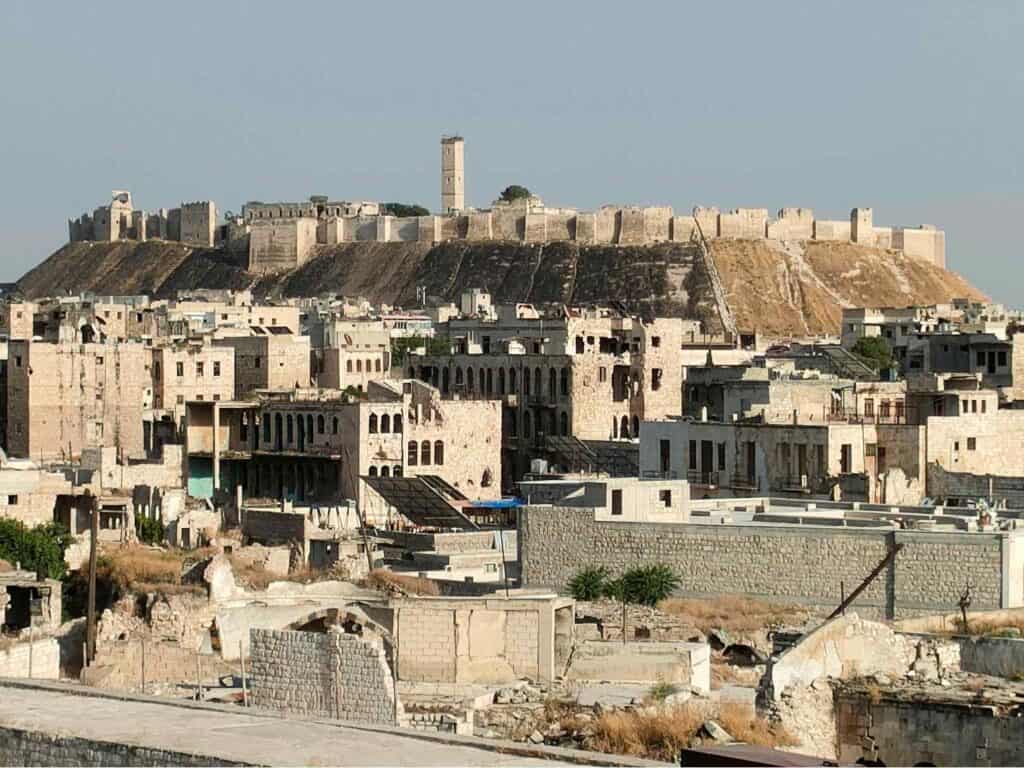
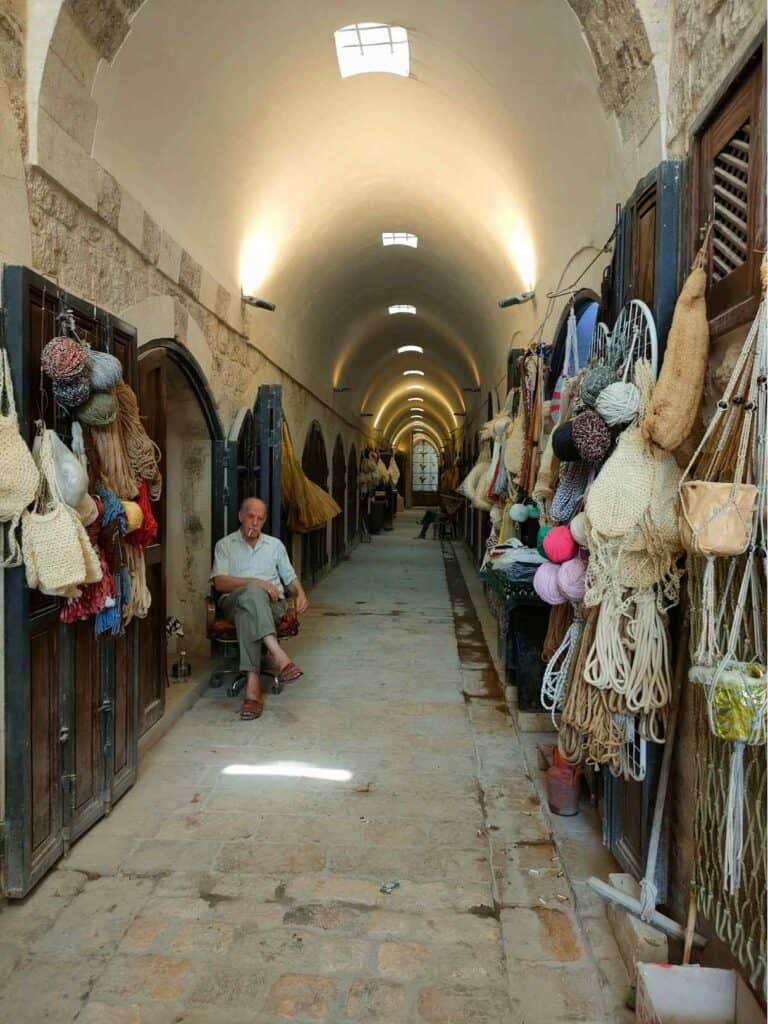
Don’t miss the world-famous 800-year-old Aleppo soap factory in the souk area. They still apply the old handmade technique. It is a mix of laurel oil, olive oil, and carbonate. They were just cleaning and packaging the dried soap, but in cooler weather, you can also observe the boiling phase.
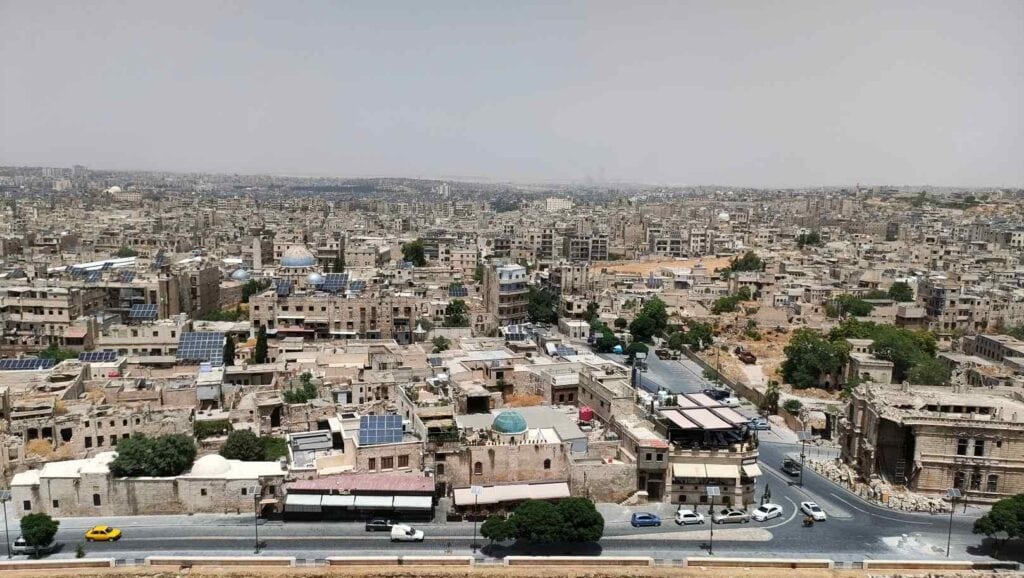
The Great Mosque of Aleppo was built on the grounds of the 6th-century Cathedral of St Helena. The mosque dates back to the 8th century, ten years after the Umayyad mosque in Damascus. It looks magnificent in the photos. However, it was under construction, and they didn’t let me have a look, but it was already at an advanced stage. Next to that is a madrasa that incorporates the remains of the cathedral built by St Helena. Christians used the cathedral until 1124, when the mosque was built alongside it.
The way to Al-Jdeida, the pleasant Christian district of Aleppo, leads through the modern city that displays French-style architecture with tree-lined avenues and city parks. One of the main examples is Hotel Baron, which accommodated several famous people in the past, including Lawrence of Arabia and Agatha Christie, who wrote part of her novel here. It was the first hotel in all of Syria.
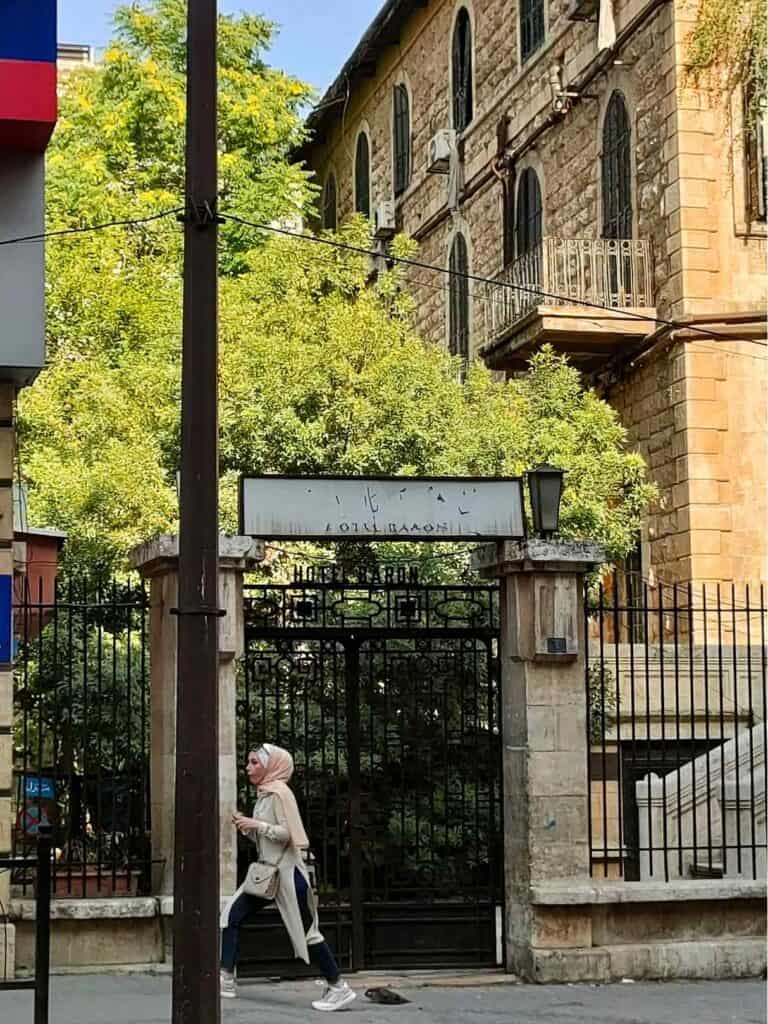
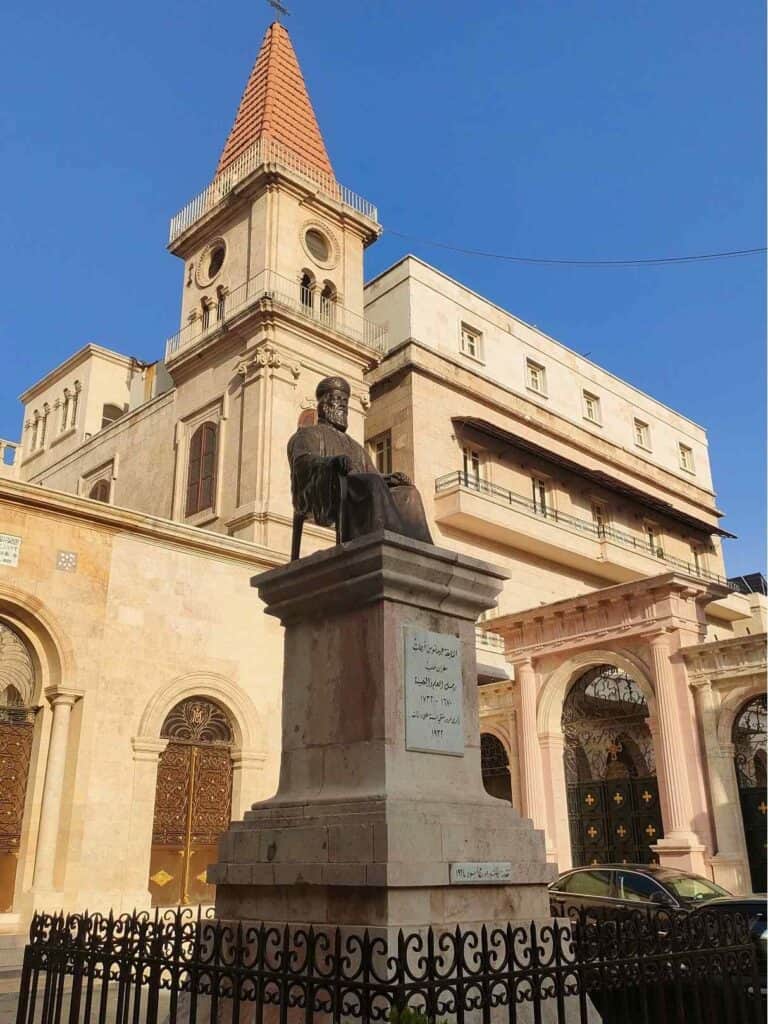
Al-Jdeida, a pleasant district of Aleppo, was developed as an area for Christian refugees (largely Maronites and Armenians), who became prosperous traders. From the early 17th century until the beginning of the 20th century, 25% of Aleppo’s population was said to be Christians. Before 2011, it had plenty of boutique hotels and was the center of nightlife with the finest restaurants in magnificent restored Arab houses.
The Cathedral of St. Elijah is an attractive Maronite Church (Maronite Christian religion comes from Syria) that has been renovated. A picture inside reminds me of its state during the war when they still held masses in the partly destroyed church.
Nearby is the Church of 40 Martyrs, a 15th-century Armenian Orthodox Church with intricate decoration.
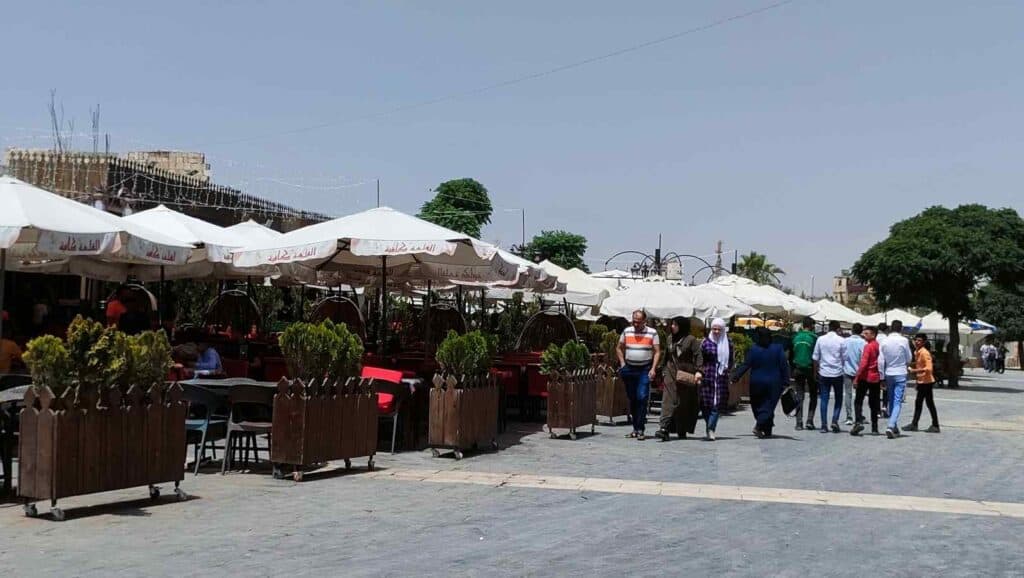
The Aleppo Museum is also something that you should not miss. It offers an even more valuable collection than Damascus, with artifacts from the earliest history of Syria, from Ebla, Mari, and Ugarit. The museum contains finds from the sites excavated by May Mallowan and French André Parrot from Mari (for example, the basalt statue of the Mari bearded man or a bronze lion head with eyes of lapis lazuli and alabaster, an excellent example of Sumerian/Babylonian art).
At the end of the day, you can drive to the hillside for a fantastic view of the city and finish the day in a cozy restaurant.
Apamea
Apamea is a largely neglected archeological site and doesn’t seem too impressive if you look it up on the internet. So, it even more came as a surprise to me. It was the second largest city after Antioch during the Seleucids and was expanded by the Romans, who constructed an almost two km-long colonnade, one of the longest in the Roman world, and a theatre with a capacity of 20,000, one of the largest in the ancient world. This main street was once aligned by 1200 columns with Corinthian capitals and is still the
However, when trade routes shifted, Apamea also lost its significance.
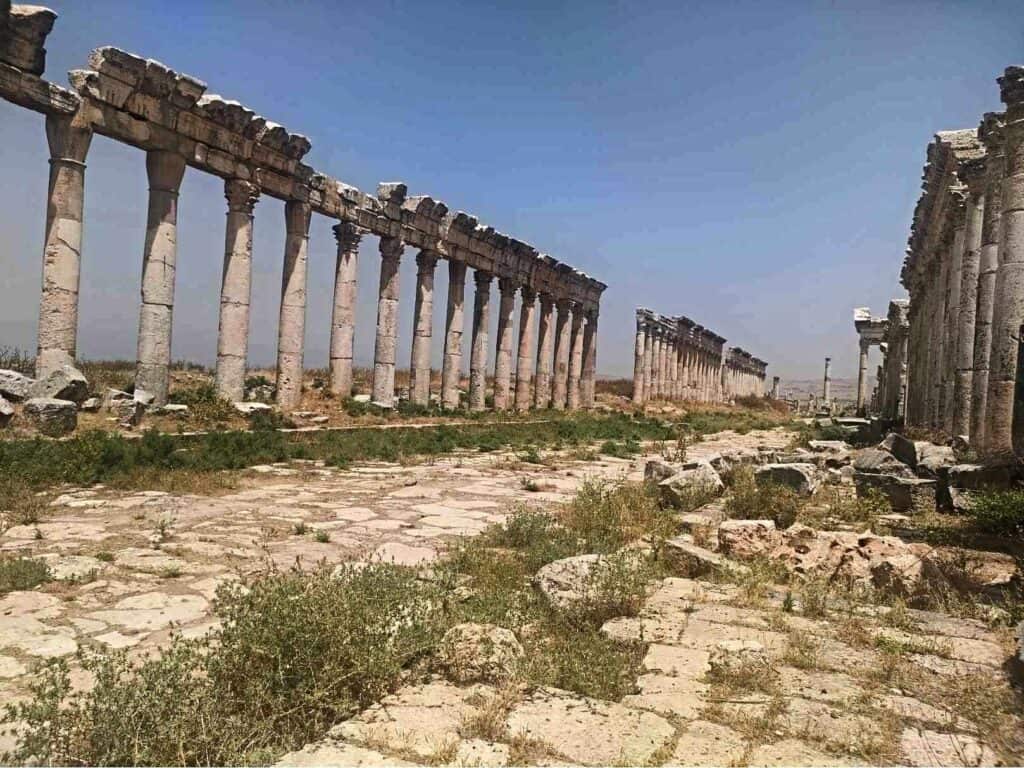
Hama
Hama is Syria’s fourth-largest city and was not greatly affected by the war. Its fertile soil is suitable for growing many types of fruit and vegetables, and everything sold in Hama is fresh and tasty.
Hama is more conservative than any other city in Syria. All women cover their ears and full bodies and seem more reserved. They usually don’t like being photographed.
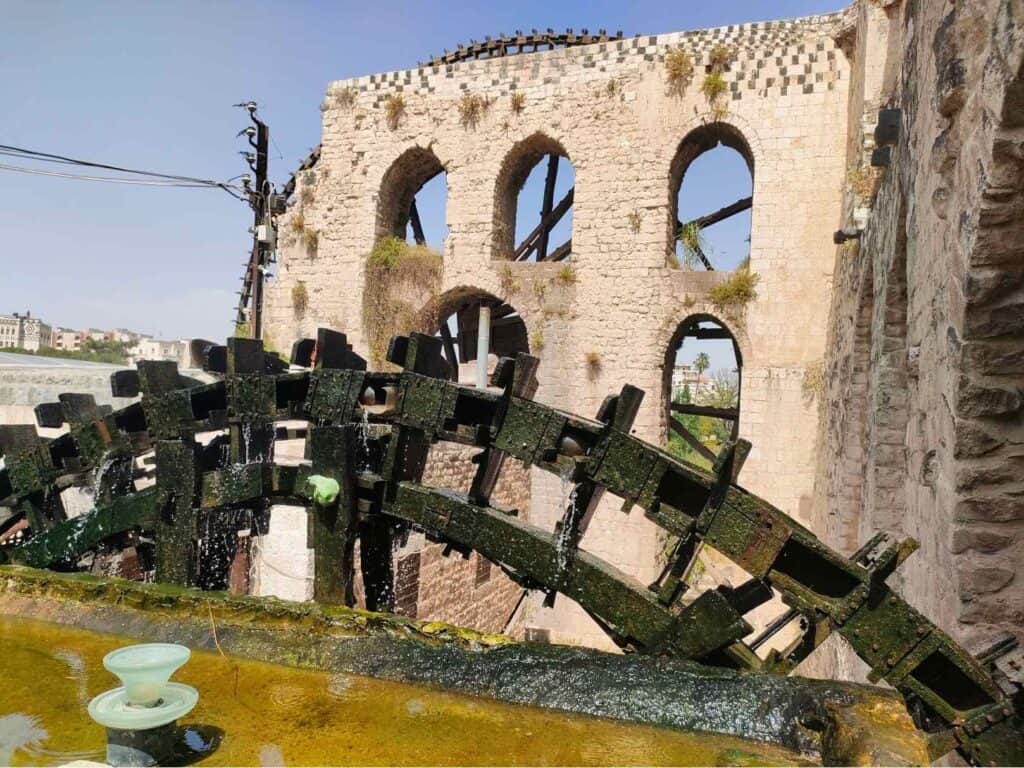
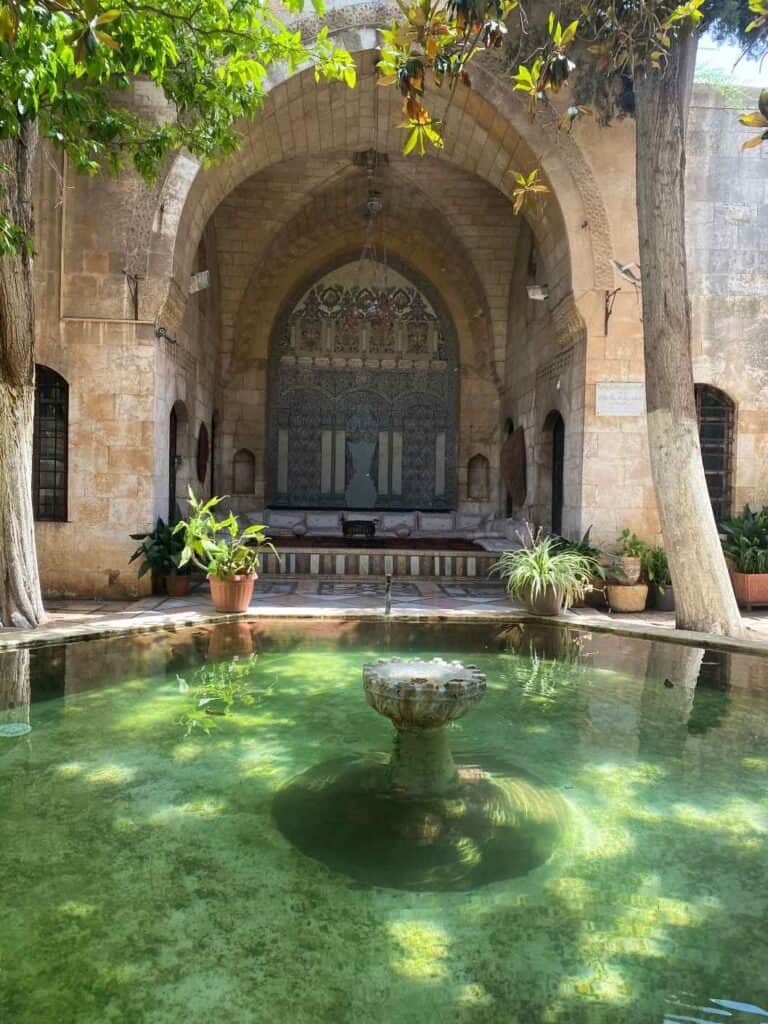
Hama is a pleasant city with the Orontes River crossing the center. The green parks (not without rubbish, though) and the hundreds of years old still functioning water wheels along the riverbank and restaurants with excellent views make it a nice place to relax. It is a charming city without big attractions. You can visit the Azam Palace and the art gallery opposite the palace, which has workshops for more artists. It was popular among tourists to buy some beautiful paintings, but they have also struggled since the war.
Krak des Chevaliers
According to Arabian Lawrence, Krak de Chevaliers is “the finest castle in the world.” The castle has remained largely unchanged since the 12th-13th century.
The landscape turns green, and winding roads take you to the massive Crusader castle towering over the valley. Another UNESCO World Heritage is where Major Balazs, a Hungarian archeologist, and his team excavate. They are known in Syria as the only archeologist group that didn’t leave Syria even during the war. I was very proud to hear that being a Hungarian national as well.
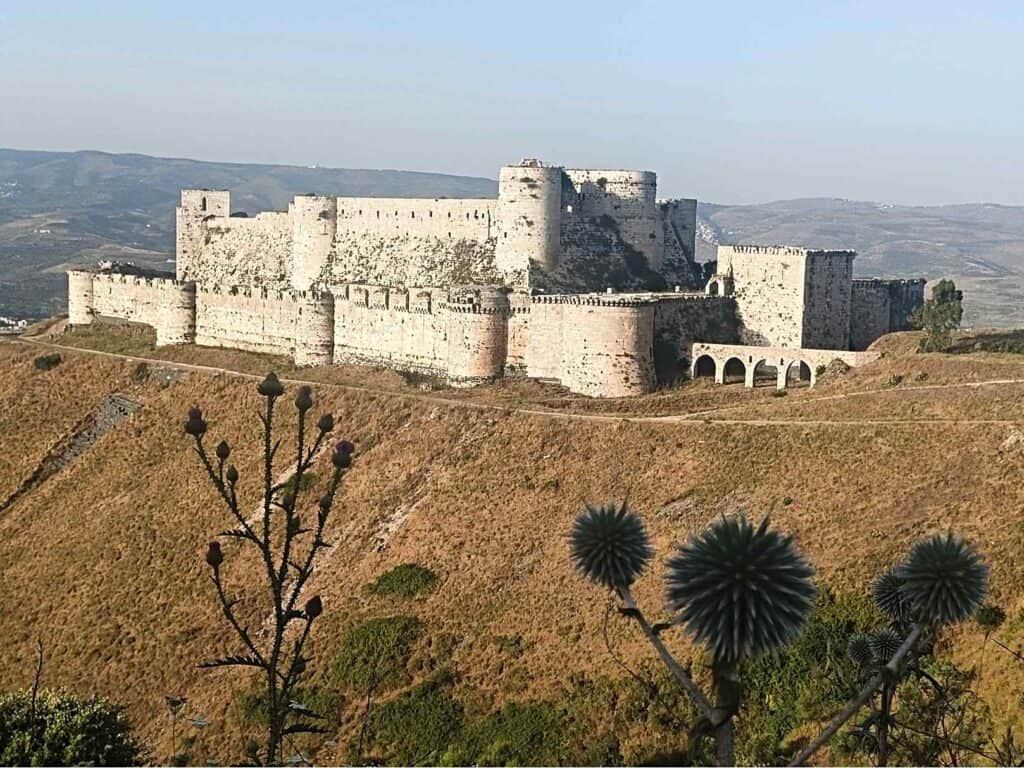
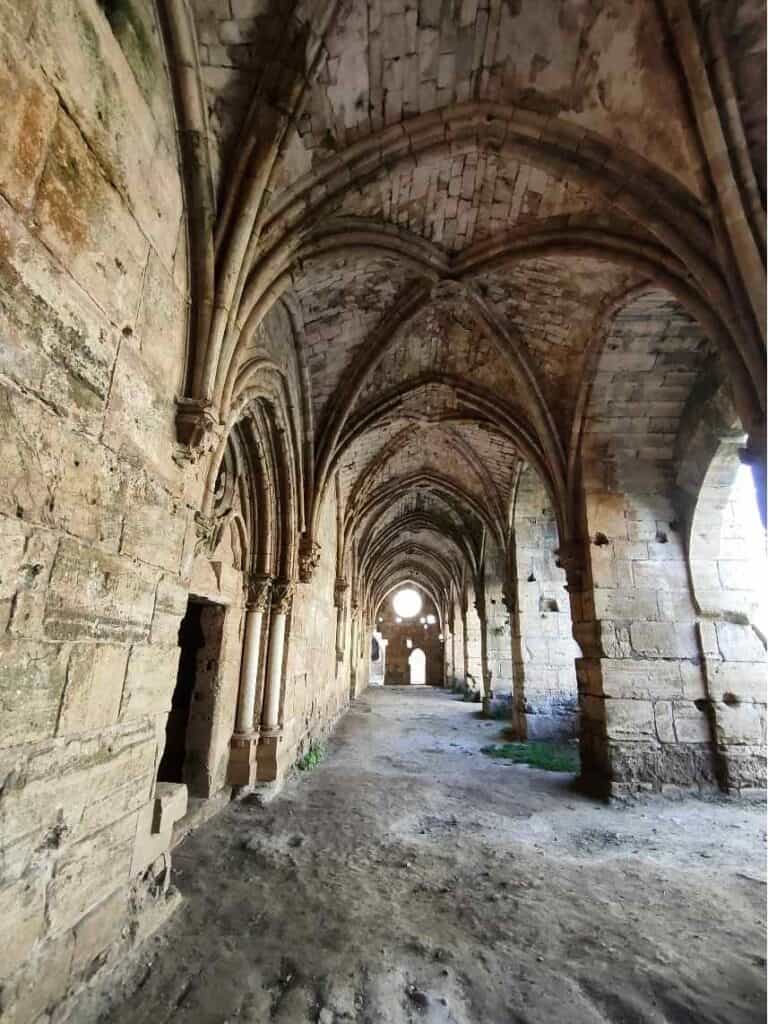
This fort, with a double wall system, was unconquerable. In 1271, the Mameluk Sultan Baibar, after nearly a month of attacking Krak’s defenses, still could not break through. Then, a letter arrived from the Crusader commander at Tripoli (Lebanon) telling them that there were no more reinforcements and that they should negotiate a surrender. So, they gave up Krak des Chevaliers to the Mameluks under the offer of safe conduct. On reaching Tripoli, they learned that the letter was a forgery.
This is how, after 160 years of resistance, the castle was taken by trickery.
It is a mainly military castle but the arcaded cloister-like loggia, the gothic colonnaded hall are impressive.
Villagers lived inside the castle until the French excavators evacuated them before starting their work. But in return, many of them became wealthy from the booming tourism.
Saladin’s castle (Sahyun castle)
Saladin, the founder of the Ayyub dynasty, captured the castle originally founded by a Crusader knight named Robert de Saône. Approaching the castle is picturesque, with a winding road leading down into the ravine surrounded by mountains 1500 meters high and covered with lush green vegetation. Yes, this is also Syria. The fortified castle has a stunning location perched on top of the hill. It was named after Saladin, but it was entirely constructed by the Crusaders.
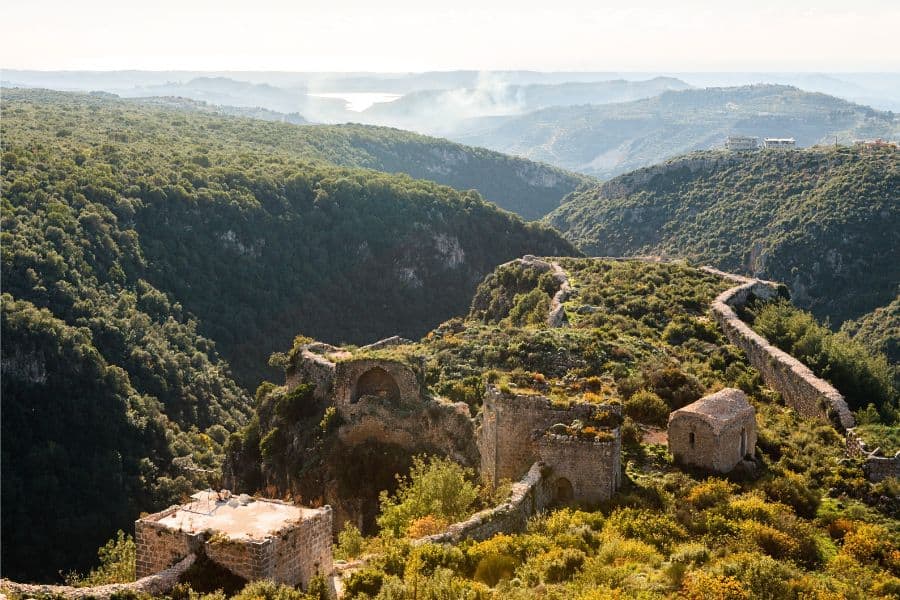
Latakia and Tartous, the coastal towns
Latakia and Tartous are the two main cities along the coast where you can feel the vibe of the Mediterranean in Syria. This 180-km-long area, stretching from the Turkish border in the north to the Lebanese border in the south, is characterized by terraced hills with olive groves and fruit orchards. Latakia has an especially stunning location, with steep, rugged mountains rising above.
Latakia, revived by the French as a port city, is a popular cosmopolitan holiday resort with palm-treed avenues, 5-star luxurious hotels, pleasant cafés and shopping malls, and a French atmosphere. It is one of Syria’s friendliest and most vibrant cities, with most of the population being Alawite. Latakia doesn’t have many attractions; it is more a place to relax and enjoy the seaside.
SafetyWing is a recommended and affordable travel insurance. IATI is another reliable travel insurance that you can use regardless of your nationality in Syria. However, local travel agencies might include travel insurance in your tour package. This was the case with me when I traveled with Syrian Guides.
It is one of the wealthiest and least conservative cities in Syria due to its many families with expatriate relatives working overseas. The attractive marina promenade, shopping malls, and hotels are mainly investments from the Gulf countries.
Tartus, Syria’s second largest port city after Latakia, has an attractive corniche. The most exciting thing to do is to take a boat to Arwad island, the only island in Syria that measures only 800 m*500 m. Don’t imagine this island as a resort with hotels and sandy beaches. It is even a little messy, but the winding alleys leading to the Crusader fort have a charm. It is interesting to know that the original settlers of Arwad are mentioned in the Bible as descendants of Canaan, one of Noah’s grandsons.
The best time to go there is during summer, as at other times of the year, this coastal area can be very rainy and stormy.
Ugarit
Ugarit is known as a place where the first alphabet was discovered on clay tablets. Prior to that Egyptian hieroglyphs and Mesopotamian cuneiform with countless symbols were in use. Here in Ugarit they used only 30 letters. This alphabet introduced around 1400 BC was the origin of the Arabic and probably the first alphabet in the world. The Ugaritic language was identified as a semitic language, and ancient form of Hebrew.
All you need to know before traveling to Syria
The site was discovered by a local farmer while working on the soil in 1928. It was once a major Bronze Age settlement in the Middle East. The French started the excavations in 1929, and most of the artifacts from Ugarit are on display in the Louvre, while the rest are in the museums of Aleppo and Damascus. Excavations revealed that Ugarit had its golden age in the 2nd millennium BC. Ugarit had an impressive royal palace with almost 100 rooms and used an extraordinarily advanced water system with wells, water channels, and basins. It also had a residential area, royal tombs, and a Temple of Baal that was famous in the Middle East. However, not much is left of this once extraordinary city, and one must use imagination.
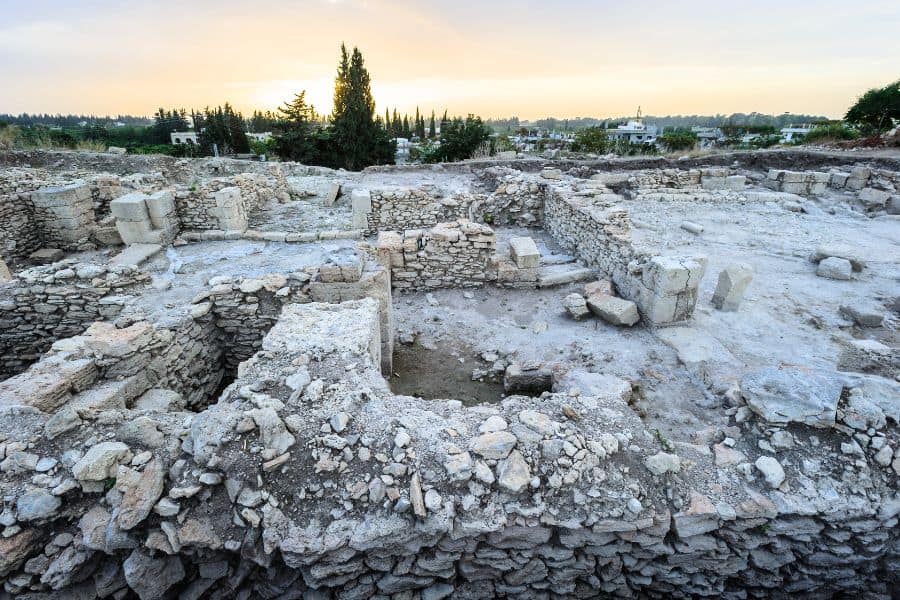
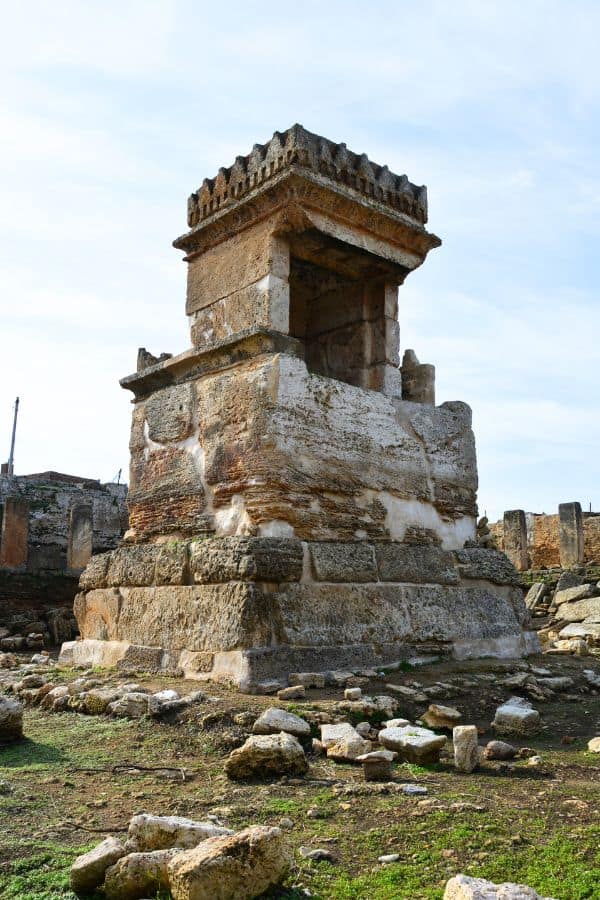
Amrit
The archeological site of Amrit, an ancient Phoenician city, is located in pleasant surroundings in a rural area surrounded by fields and orchards close to the sea. One of its main features is a 3 meter high stone block, part of Phonecian temple of the 2nd millennium BC. All that was once in the middle of a pool making the church accessible only with boat.
Another highlight of the site of Amrit is the 220-meter-long stadium dating to the 15th century BC. It is thought to be the first place in the world where competitions were held as part of religious rites. Therefore, it can be considered the origin of the Olympic Games, usually associated with the Greeks. The stadium could welcome over 11,000 spectators, and they also discovered adjacent areas for training. The stadium in Olympia, Greece, has almost identical dimensions.

